pdf: graffiti as subject and as representation
Part 1:
Graffiti as subject
 Graffiti I did on an estate near Kilburn, mid-1970s
Graffiti I did on an estate near Kilburn, mid-1970s
I think the first bit of graffiti I ever did was when I was 20. Well, I was often a bit retarded at that time. I’d done self-made stickers when I got involved in revolutionary “politics” at the age of 19, but never spray-painting. The first bit of actual painting was on the walls of the Polytechnic (of North London) I was meant to be studying in: “The road of exams leads to the palace of boredom”, a detournement of Blake, though at that time I had no idea of what “detournement” meant or how the Situationists had theorised it. After that I did a bit more graffiti round the college – such as “Do you want a B.Sc. in Boreology?” which prompted some people to ask “What’s Boreology?”. Another one was “Burn the Berlin Wall!” – written on a wall separating the lecturers’ canteen from the student canteen, a wall which merely functioned as a separation but was difficult to totally enforce as on either side there was an unimpaired opening between the two. The student side was sparse and functional – lino on the floor and light cream walls, that’s apart from the tables & chairs. On the lecturer’s side you got served quicker and the food was a bit better, bit more choice – plus there was a carafe of water on each table. And there was a carpet. Before its transformation into a Poly the building had been a jam factory, the word-play irony of which did not escape us. Designed to make the place look and feel less like this factory which it did on the professors’ side of the wall, there were boring still life reproductions of paintings of bowls of fruit on the wallpapered wall, presumably intended to incite the fruitophobe lecturers to a healthier diet. I subsequently put a title to these art-for-beginners-type pictures – “Still Death”. In another part of the Poly during an occupation, I wrote “Mao’s trap” next to a cartoon I drew on the wall with a felt-tip, of a cat looking like Mao waiting next to a mouse trap with his little red book as bait instead of cheese (a version of this later appeared in one of the issues of Solidarity). I did other stuff, though can’t remember what apart from “The phantom spray-painter strikes again!”, which led to the authorities making a public statement saying that if the “phantom spray-painter” was caught, he’d be suspended or expelled from the Poly. I wasn’t caught.
Later on mostly in the 1970s, in my 20s, I used to go out at night, often stoned, and do loads of graffiti round West Hampstead, Kilburn, Swiss Cottage way which was where I was living. Below is some of it. I should emphasise that this was before the massive invasion of CCTV cameras, so writing up graffiti in the middle of the night was hardly the most dangerous or risky thing to do.
Above: THE WALLS IN YOUR HEAD PROTECT THE WALLS IN THE STREET/BEDROOM/OFFICE/SHOP-FLOOR, ETC.

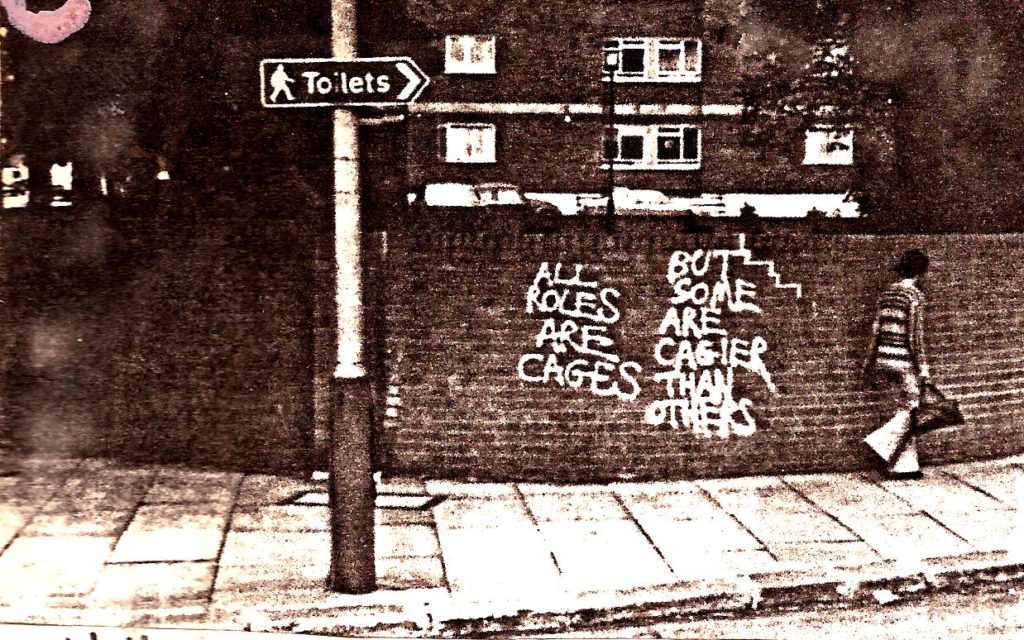
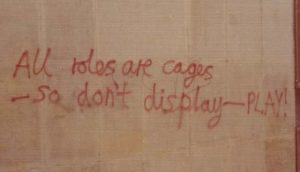
 “All the world’s a lie and the men and women merely players and spectators.”
“All the world’s a lie and the men and women merely players and spectators.”
–written on a theatre in Swiss Cottage, London
 Above and below: written in a posh part of London (St. John’s Wood)
Above and below: written in a posh part of London (St. John’s Wood)
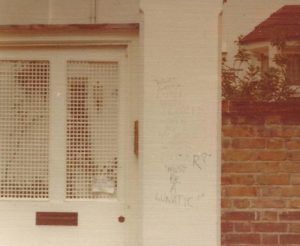
Above: “What nasty little vandal scrawled over my nice white pillar?” “Must be a lunatic!” (also in St. John’s Wood)
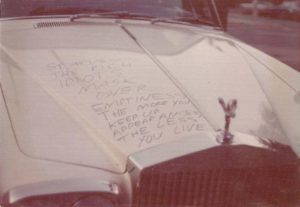
STATUS – THE RICH IDIOT’S MASK OVER EMPTINESS – THE MORE YOU KEEP UP APPEARANCE THE LESS YOU LIVE

“The cold war of daily life – repetition, cynicism, repetition, work, repetition, resignation, repetition, TV, repetition, the “familiar”, repetition, “home”, repetition
novelty, the latest Fastbinder, novelty, your new lover, novelty, rock against racism, novelty, the latest Bowie, novelty, the latest therapy, novelty”
40 words – probably the longest bit of spray-painted graffiti I’ve ever done (felt-tip ones may have been longer). It has a bit of a story behind it. I did the top half – the first 2 lines – and then ran out of paint. I went home and got a bag full of spray cans I’d accumulated and set off back to the spot to continue doing the 3rd line. Using red paint, I wrote “novelty, the latest” and suddenly a cop car came to a halt about 7 meters away and 2 cops jumped out of the car. I quickly excluded doing a runner and, with the cops looking at the graffiti, walked towards the car with my hands in the air and cried out “Ok – you’ve got me” and just before I got into their car on my own one shouted to me – “Hey – come back!”. I turned around and walked back, looking a bit sheepish. The cop in charge said, “If you did this [pointing to the top 2 lines in black], you’ll be arrested.” I said timidly, “No – just the bits in red.”. They didn’t think to look in the bag, which must have had at least 6 spray cans in it. Nor did they notice that the handwriting was the same. The cop in charge, who’d ordered me back, said “You know this costs ratepayers money”. I hung my head in shame and said “I hadn’t thought of that”. He then went on about the fact that he’d come round to my flat when I’d had a burglary (in fact, a friend had accidentally broken a window and I’d used it as a pretext to do an insurance scam) and had been of great help – in fact, all he’d done was report the “break-in”, part of his job obviously. I nodded submissively and apologetically, saying “Sorry” in a rather pitiful tone. They confiscated the red spray-paint can and let me go! I sensed the cop lower in the hierarchy didn’t seem to like this. But the cop-in-charge had reacted to me giving myself up in an aggressively masochistic way by asserting his power by calling me back and just giving me a little lecture. Then, seeing my “remorse”, had decided that there was more moral authority in letting me go than somehow allowing my voluntary surrender to seem like a kind of form of victory for me – he’d forced me to climb down from my weird combination of acquiescence and self-assertion and in doing that he probably felt like he was in control. Incredibly stupid on their part – not checking the bag or the handwriting – and certainly not something anyone would get away with today even if there were no cameras around to record the “crime”. Undoubtedly my middle class accent helped, but today, even with a middle class accent, I’d get nicked at the very least. Cops just don’t behave like that nowadays – they’d probably not just have arrested me, but thumped me, and cuffed me, etc. Those were the days!

And NOW – to brighten up an otherwise dull* bus queue – GRAFFITI!
*”Shocking weather, isn’t it?”
“I’ve been waiting half an hour for this bus”
“And then 5 come in a row”
“Nice graffitti, isn’t it?”
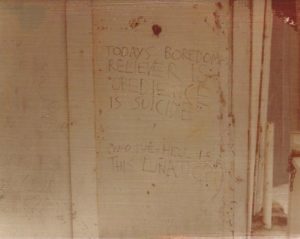
TODAY’S BOREDOM RELIEVER IS:- “OBEDIENCE IS SUICIDE” (“WHO THE HELL IS THIS LUNATIC?”
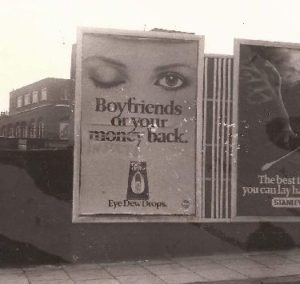
Above: Ad reads “Boyfriends or your money back”. I crossed out “money” and put in “insults”.
 On a school: VANDALS – “The urge to destroy is a creative urge”. SIGNED: Bakunin, Marx, the Situationists, the insurgents of WATTS ’65, FRANCE MAY’68, PORT TALBOT ’69. PORTUGAL ’74-’75, SOWETO & POLAND ’76
On a school: VANDALS – “The urge to destroy is a creative urge”. SIGNED: Bakunin, Marx, the Situationists, the insurgents of WATTS ’65, FRANCE MAY’68, PORT TALBOT ’69. PORTUGAL ’74-’75, SOWETO & POLAND ’76
Below: some graffiti I did on my old school, returning there at night 7 or 8 years or so after I’d left:
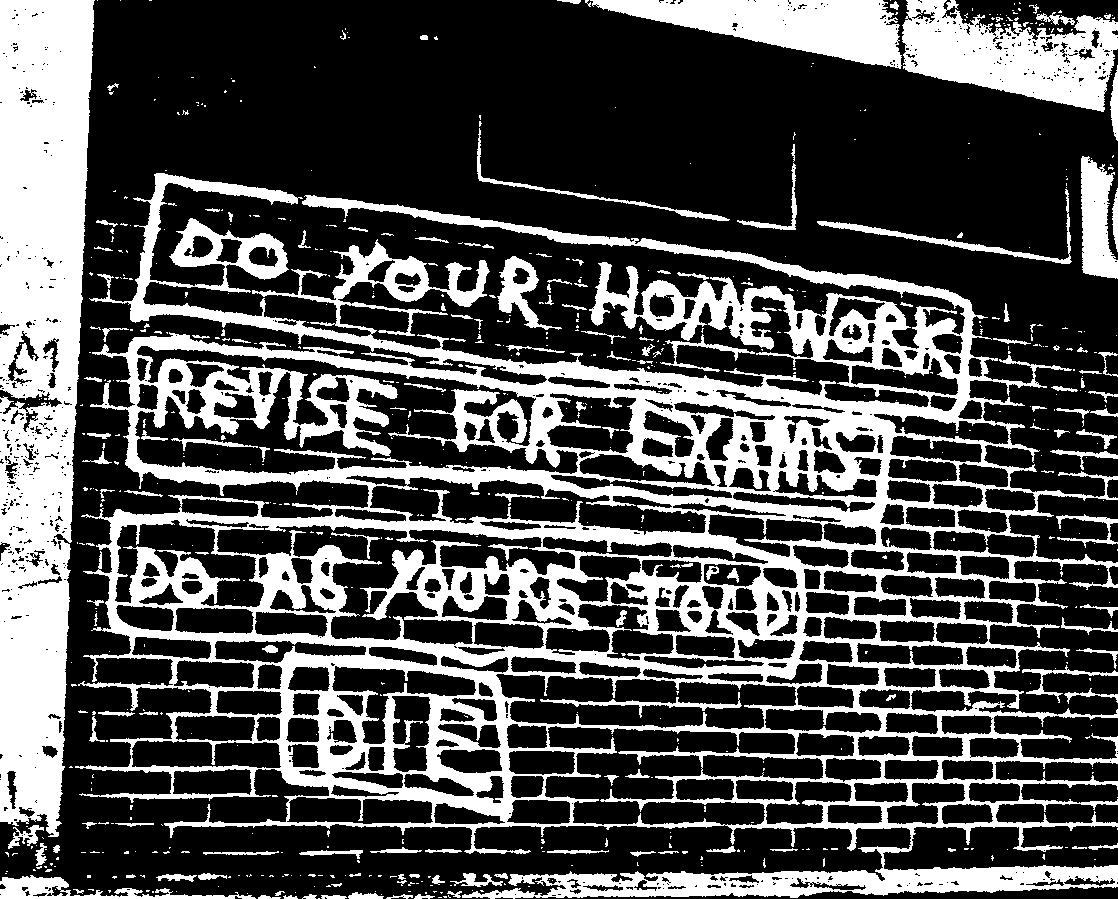
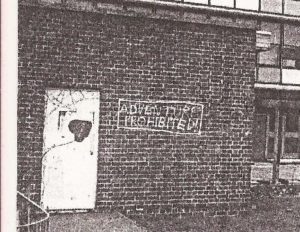
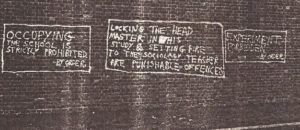
“OCCUPYING THE SCHOOL IS STRICTLY PROHIBITED – BY ORDER”, “LOCKING THE HEADMASTER IN HIS STUDY & SETTING FIRE TO THE SOCIOLOGY TEACHER ARE PUNISHABLE OFFENCES”, “EXPERIMENT FORBIDDEN – BY ORDER”
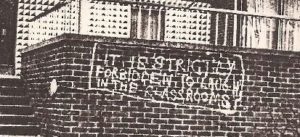
“IT IS STRICTLY FORBIDDEN TO LAUGH IN THE CLASSROOMS”
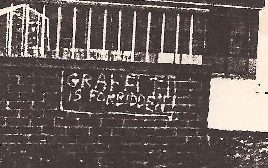
“GRAFFITI IS FORBIDDEN”
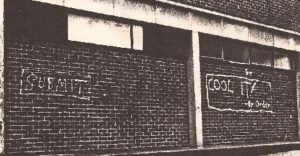
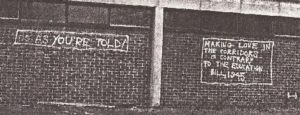
“DO AS YOU’RE TOLD”, “MAKING LOVE IN THE CORRIDORS IS CONTRARY TO THE EDUCATION BILL 1945”
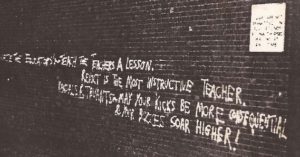
“EDUCATE THE EDUCATORS – TEACH THE TEACHERS A LESSON. REVOLT IS THE MOST INSTRUCTIVE TEACHER. VANDALS & TRUANTS – MAY YOUR KICKS BE MORE CONSEQUENTIAL & YOUR BUZZES SOAR HIGHER!”

“VANDALS & TRUANTS – MAY YOUR KICKS BE BETTER AIMED & YOUR BUZZES SOAR HIGHER! DON’T SAY “PLEASE SIR” SAY: “PISS OFF, COP!”

“Examine the examiners, De-grade the Degraders, Educate the Educators – Teach the Teachers a lesson”

“The education factory manufactures only cogs and revolutionaries”

The above was only half original – I’d half-copied it from someone who’d written “We teach all hearts to break” on his school, and added the second bit.
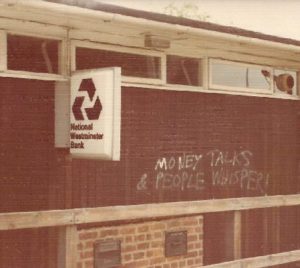
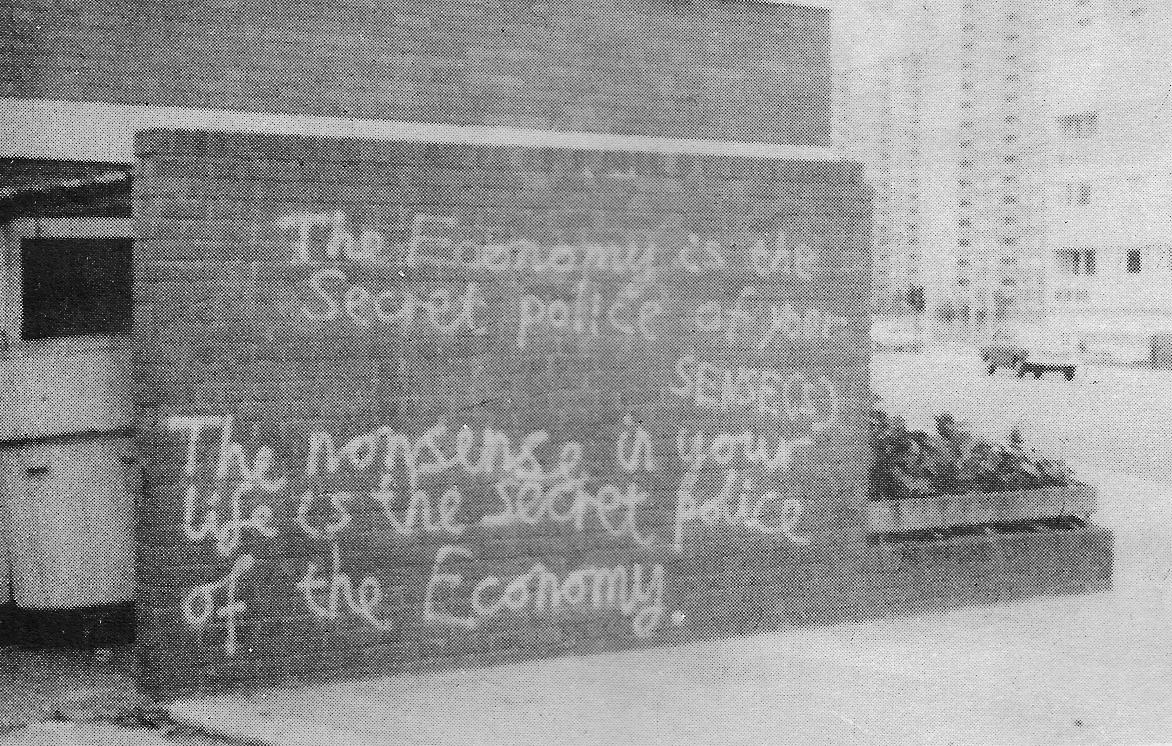

Above: Work= Forced labour, Boredom & frustration


 Above was written by a friend at the same time I wrote the graffiti below
Above was written by a friend at the same time I wrote the graffiti below
 The superego in your head guarantees the supermarkets in the street
The superego in your head guarantees the supermarkets in the street
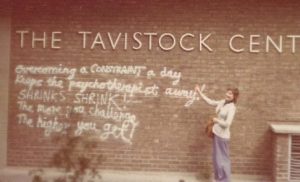
On a psycho-therapeutic clinic where R.D. Laing and other modern “anti-psychiatrists” used to work and where they’d have the more modern forms of therapy. The woman on the right is my ex-wife. The graffiti was quickly washed off and in its place I scrawled up “Illusions of growth, growth of illusions”
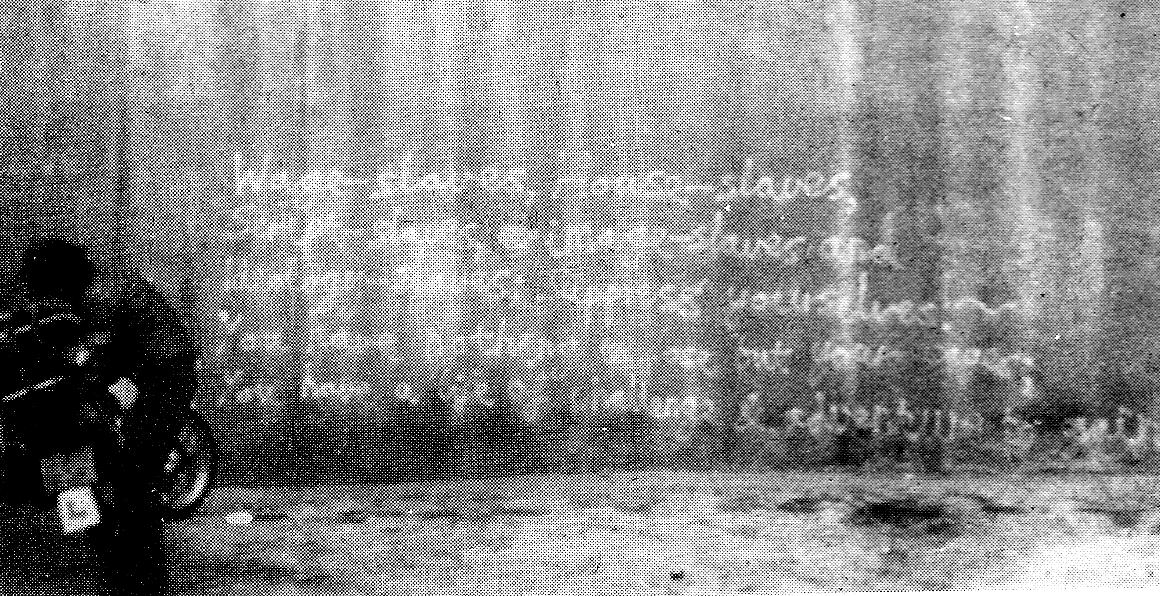 Hard to read grafitti in Kilburn High Road, London:
Hard to read grafitti in Kilburn High Road, London:
“Wage-slaves, House-slaves, Script-slaves, image-slaves and Ideology-slaves: Suppress yourselves! – You have nothing to lose but your cages, You have a life of challenge and adventure to gain”
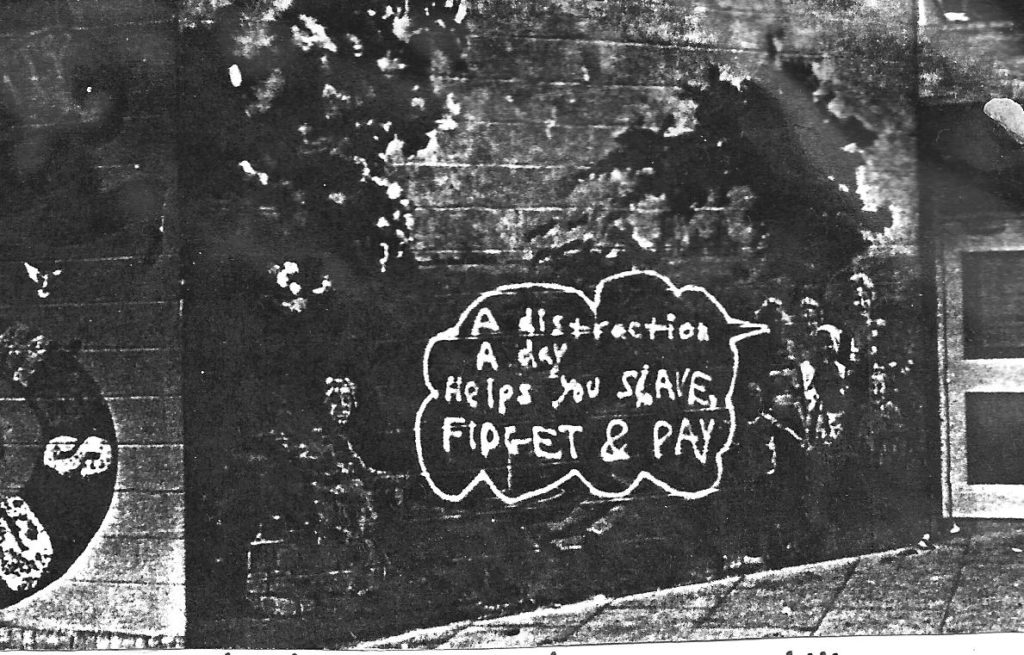 A detournement of an ad for Mars bars that went “A Mars a days helps you work, rest and play”
A detournement of an ad for Mars bars that went “A Mars a days helps you work, rest and play”
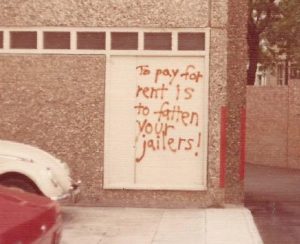

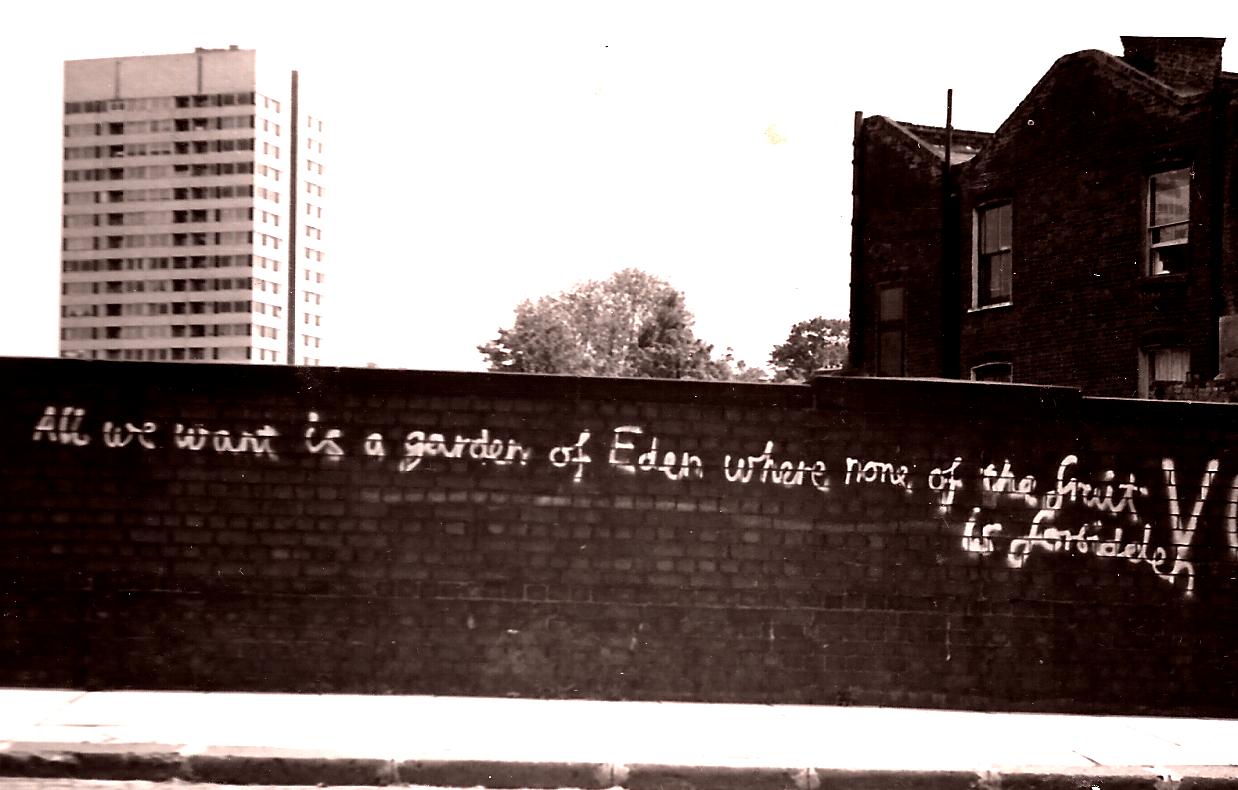
 Photo taken at night during the1970s – graffiti on the base of a statue of Mary in the garden of a convent; it’s impossible to read but it says “Gentle nun – this image of loving tenderness is but bait on the hook of guilt, renunciation and submission – KICK THE HABIT!”
Photo taken at night during the1970s – graffiti on the base of a statue of Mary in the garden of a convent; it’s impossible to read but it says “Gentle nun – this image of loving tenderness is but bait on the hook of guilt, renunciation and submission – KICK THE HABIT!”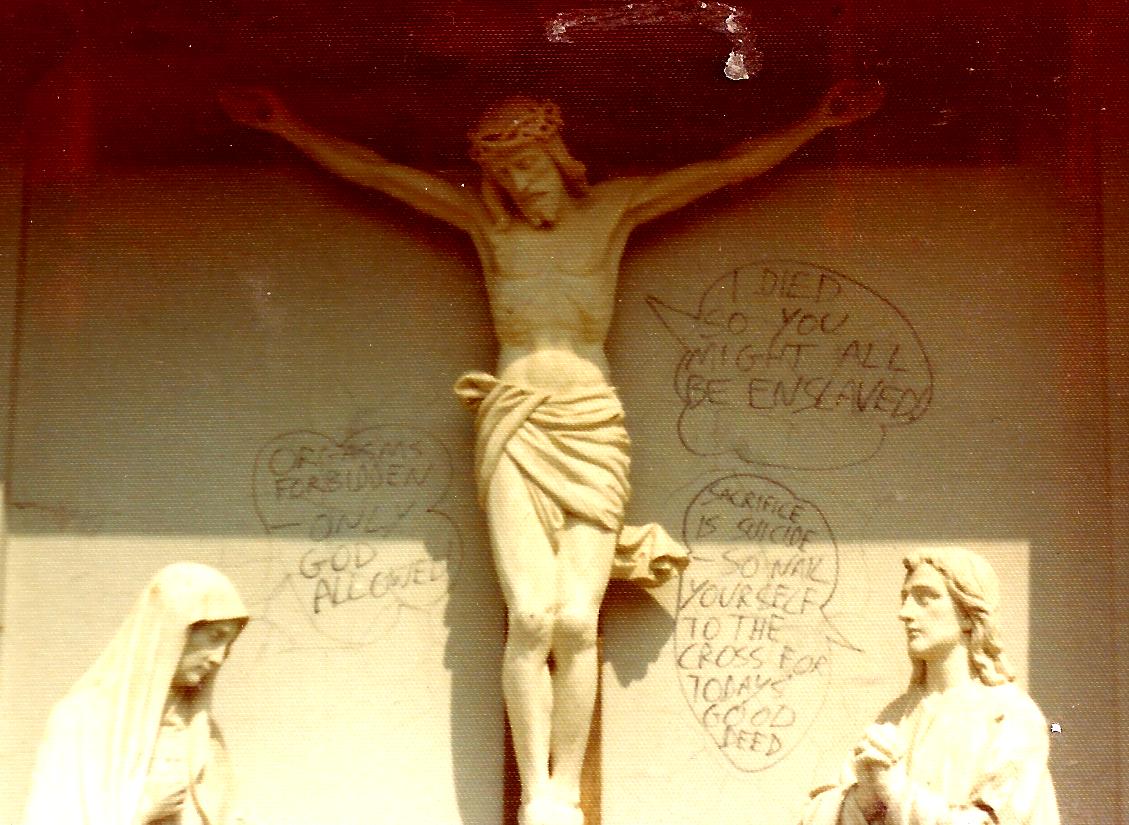
Mary : Orgasms forbidden – only God allowed
Jesus: I died so you might all be enslaved
John: Sacrifice is suicide – so nail yourself to the cross for today’s good deed
Mary: Hey – no-one’s falling for the self-denial, guilt-inflicting bit nowadays – Christ! – what’ll we do?
Christ: Cool it, Mary – we’ll just have to push the abstract love, universal harmony, total acceptance line – that’s all
John: Yeah – get ‘em to surrender to some high-energy charismatic guru or something – ok ?
(below but virtually unreadable)
Below: on a cinema

“YOU CONSUMA THE IMAGE WE GOTTA THE MASKS” Above: a quote from Vaneigem
Above: a quote from Vaneigem
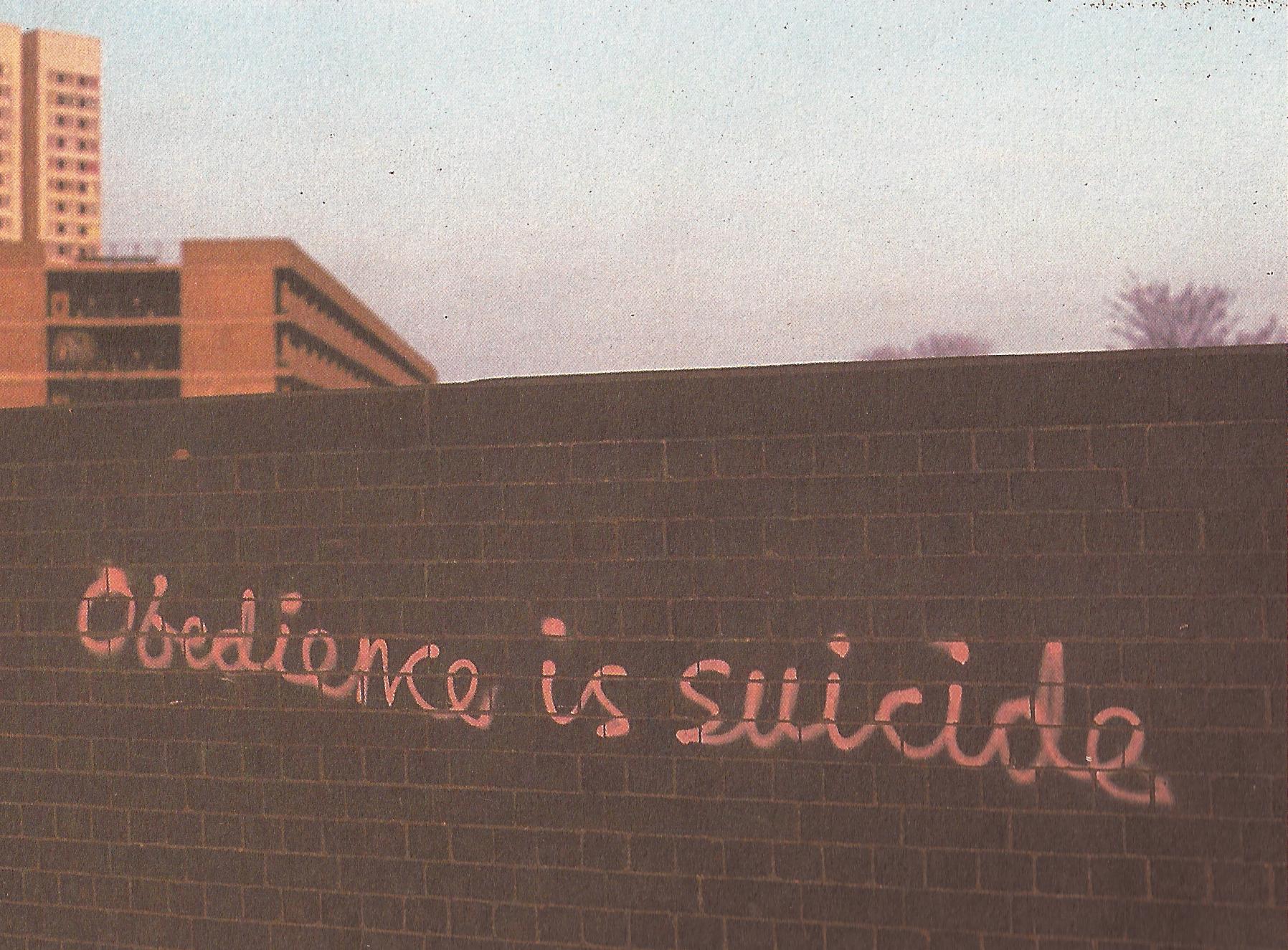
Just by a supermarket:
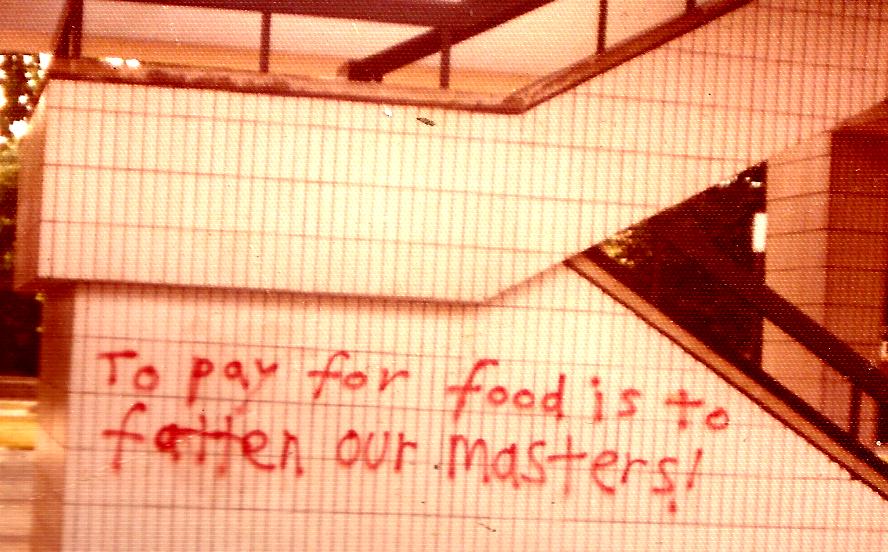


Shortly after the miners strike had ended there was to be a meeting scheduled the next morning for the opening of a new housing bureaucracy to be attended by Neil Kinnock (at that time, the Labour Party leader) and the London borough of Islington’s Labour leader – Margaret Hodge (later to become a horrible minister under Blair and Brown). At 1a.m. I went along opposite where the meeting was scheduled for and spray-painted the above. Next morning I went along to the meeting hoping to meet up with friends who never turned up. Kinnock got out of his chauffeur-driven car and a couple of what looked like his minders pointed out the graffiti next to the car. A few minutes later in his speech to a newly built Housing Office he said “This council is doing something practical – not like some theory on a wall”. It took me a couple of hours, long after I’d left, for my slow brain to think of an appropriate response – “That’s no way to talk about the GLC” (the Labour Party’s Greater London Council at that time had a massive billboard advertising campaign put up on thousands of walls across London against Thatcher’s soon-to-be-enacted abolition of the council). We’re almost always too late for the best ripostes, unconfident words stuck firmly at the back of our dry throats. But often, depending on circumstances, it’s best to say anything rather than nothing – you usually regret what you didn’t do much more than what you did. And you learn to express yourself better the next time. But I hadn’t, and just “contented” myself with regretfully ruminating possibilities round my head.
***
Below: some ads for the journal “Re-Fuse” that I put together in 1978

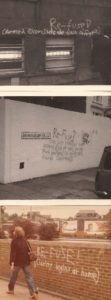 Above: top to bottom :
Above: top to bottom :
Re-Fuse! (Armed exorcism: the class struggle)
Re-Fuse! (the only pamphlet to demand £900 per week for the Ford workers in parity with Fords Chairman!) [this during the Fords workers strike that was the beginning of the Winter of Discontent]
RE-FUSE! (clarity begins at home)
Below: top to bottom –
 Below:
Below: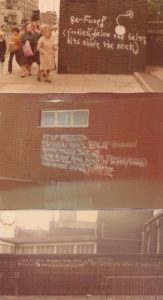
4 chronologically-ordered stories of graffiti I did, for which I have no photos:
In 1979 Chairman Hua, the successor to Mao, visited Thatcher in London. Being officially a “marxist” (of the Marxist Leninist variety) he felt compelled to visit the shrine of his apparent inspiration – Marx’s grave in Highgate cemetry. His visit there was announced in the London evening papers the day before he was due to visit at 10am the next day. Me and a friend went along there in the pouring rain at about 2a.m. to graffiti the sculptured tombstone (which the Stalinist “Communist” Party had put there in 1956 to replace a small humble tombstone). On the base of the tomb, the quote from so many people’s guru was “Philosophers have merely interpreted the world in various ways; the point, however, is to change it”. We wrote “Leninists have merely re-organised capitalism in various ways. The point, however, is to slit their miserable throats”, as well as “Discos in Peking won’t distract the Chinese proletariat” and a couple of other things. We got soaking wet, but were pleased. Next day, in the papers we read “In the past, Marx’s grave has been vandalised with graffiti – but this time it was spotless”. I was furious – we’d got soaked for nothing. So, intent on some form of retribution, I – this time alone – got into the cemetery the next night and stole the wreath that Hua had put there. The wreath was basically a plastic tyre-type thing with individual roses put on little bits of wire and stuck into the tyre. I covered my flat in Cricklewood with about 250 roses all over the place, before they all dried and shriveled. A couple of years back I wrote this in one of the comments sections of The Guardian. Responses invariably condemned my self-pride about the graffiti and suggested a CCTV camera should be placed there, which subsequently was done. These people had nothing to criticise about the Stalinist CP which had replaced the ordinary tomb in ’56, the year in which they supported the massacres in Hungary, nor did they have anything to say about the mass murderers Thatcher and Hua * . Monuments must be respected, human life held in contempt.
In April 1981, the night Brixton rose up, I went around parts of North London putting up various bits of graffiti. Under a bridge in Cricklewood I’d already written up, some time before, “Indifference is the first victory of the state – it’s shattering YOUR first success”. I simply added “Brixton -“ before it. I then drove through Cricklewood, where I lived, to West Hampstead and Kilburn spray-painting here and there, finally ending up at a library in Swiss Cottage, where, on the long wall, I wrote “France 1789, Paris 1871, Russia 1917, Kronstadt ’21, Spain ’36, Hungary ’56, Paris ’68, Italy ’69, Portugal ’74, Soweto ’76, Poland ’80, Brixton ’81. The fire next [time] will inflame all our passions and burn all states” (although I’d forgotten the word “time” and had to add it a few days later). Just as I was finishing at about 4am, a taxi drove past me and the cabbie shouted at me – I could see he was on his walkie-talkie-type phone, and was pretty sure he was calling the cops. It was a one-way system and he drove past again – I had to get back to my car, whilst not being seen by him getting into my car as he’d get the registration number. I imagined what the cops might have done to me on that night if they’d caught me after such a massive defeat for them the other side of London. As he drove round the one-way system a 3rd time I found a way to run through a small road where he was unable to see me and ran like hell to my car, getting in and driving off fast, my heart beating like fuck. He hadn’t seen the car. I was safe.
***
In September 1984, there was a TUC (Trade Union Congress) conference in Brighton. A massive miners demo had been planned there to pressurise the union bureaucrats to support the miners during their massive strike. The day before I went down there with my girlfriend and we put up – all over the town – “T.hatcher’s U.nofficial C.ops”. The next day I went with about 12 men and women from the Southwark Unemployed Centre to the town, arriving mid-morning, after going a round-about way to avoid the cops’ possibly turning us back. It’d been an unusually long drive in the van, considering the normal short distance. We parked the Southwark Unemployed Centre van over half a mile from the beach, drank a bit of wine, smoked a bit of weed and headed off towards the sea front for the demonstration, armed with spray cans and pamphlets. There’s a statue of Queen Victoria in the park. Me and this other man went down to the statue and this other man gets up high to shove a black flag in her hand, whilst I, at the bottom, spray-painted, “We are all abused”. Two cops came along and, without radioing for back-up, attempted to arrest me, holding me in an arm lock from the front round my neck and at the side. The other 10 came along and, me having asked for some kind of help, one of them bit one of the cop’s hand, whilst others pushed the other cop out of the way, and I ran like fuck through the narrow streets and everybody else did likewise – everyone getting away. As soon as I met up with one of my mates, she gave me her jumper so as to look different, whilst the cops went round Brighton peering out of their cop car in vain all round the demo for the crowd who’d assaulted them. No one got nicked, and we continued the day in good spirits, elated by this small victory, handing out subversive pamphlets and chatting and arguing and feeling good, whilst most other people felt pretty bored. A few days later we got a letter from the Southwark Unemployed Centre Miners Support Group telling us off – “Whilst it is obviously no concern of ours how individuals behave in their own time…it was frankly out of order for people representing the MSG and therefore the NUM as a whole to behave in such a way that could bring the miners and their supporters into disrepute” – a laughably pompous bureaucratic representation of outraged reasonableness, especially the bit about “how individuals behave in their own time” – if only we’d realised this was work-time, we could have demanded a wage for the day!
***
**********
Below is some of the other graffiti I like from different places, not done by me
“The best slogans … were those which were simple, direct and had little leftovers of literary appeal to them – like the straight forward attack on acid merchants and impresarios castigating them as “psychedelic racketeers”. Then there was the big slogan by the Hammersmith and City line beneath the West Way between Westbourne Park and Ladbroke Grove tube station – a terrifyingly accurate commentary on the double alienation of work and programmed leisure forcibly consumed in passivity. “SAME THING DAY AFTER DAY –TUBE – WORK – DINNER – WORK – TUBE – ARMCHAIR – TV – SLEEP – TUBE – HOW MUCH MORE CAN YOU TAKE: ONE IN TEN GO MAD – ONE IN FIVE CRACKS UP”. The slogan survived throughout the 70s with its message imprinting itself on the minds of millions of commuters only to be air brushed out by the rising tide of hip-hop tags and pieces which never had an ounce of the subversive impact those huge words on bare concrete had. Seeing all that tags and pieces had to offer was mindless competition they won out. Interestingly, a kind of inventive re-creation of it still remains on blackened brick walls strung out over a couple of miles on the line between Bradford and Leeds and beginning near Pudsey station and still resisting to this day banal hip-hop makeovers.” – here
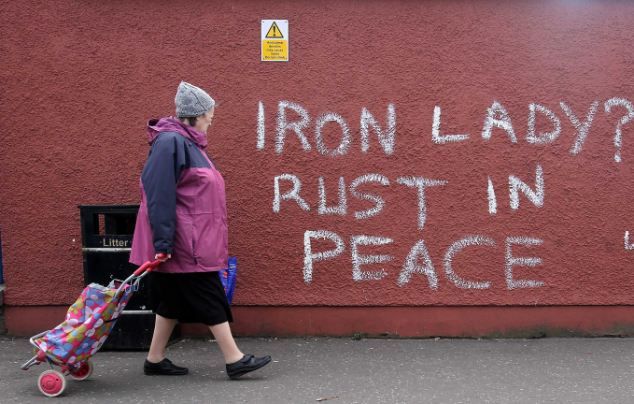
I did a version of this when she died outside English and Irish pubs in Montpellier: “Iron Lady – Rust In Piss”
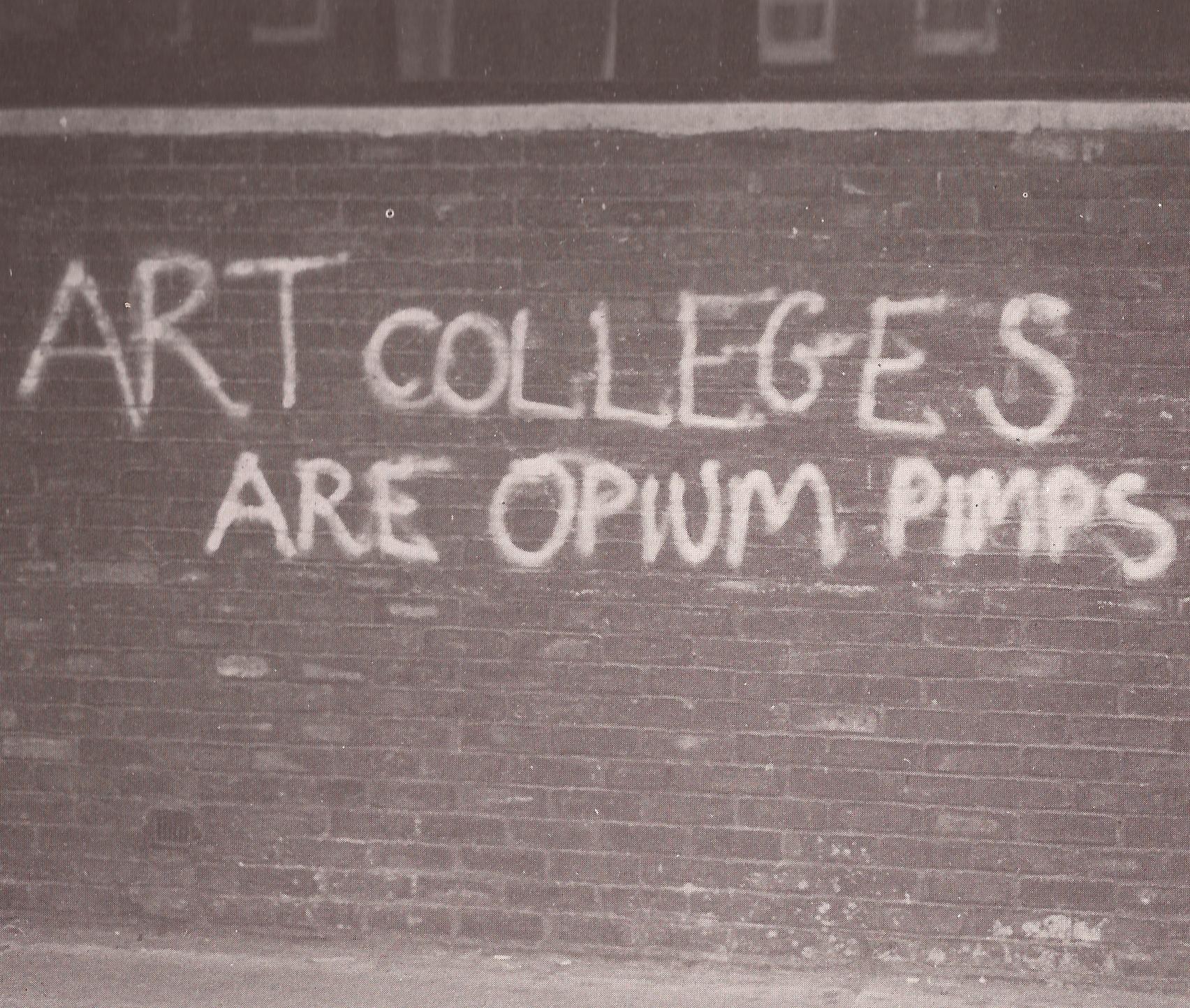 Graffiti, Notting Hill, 1970s
Graffiti, Notting Hill, 1970s
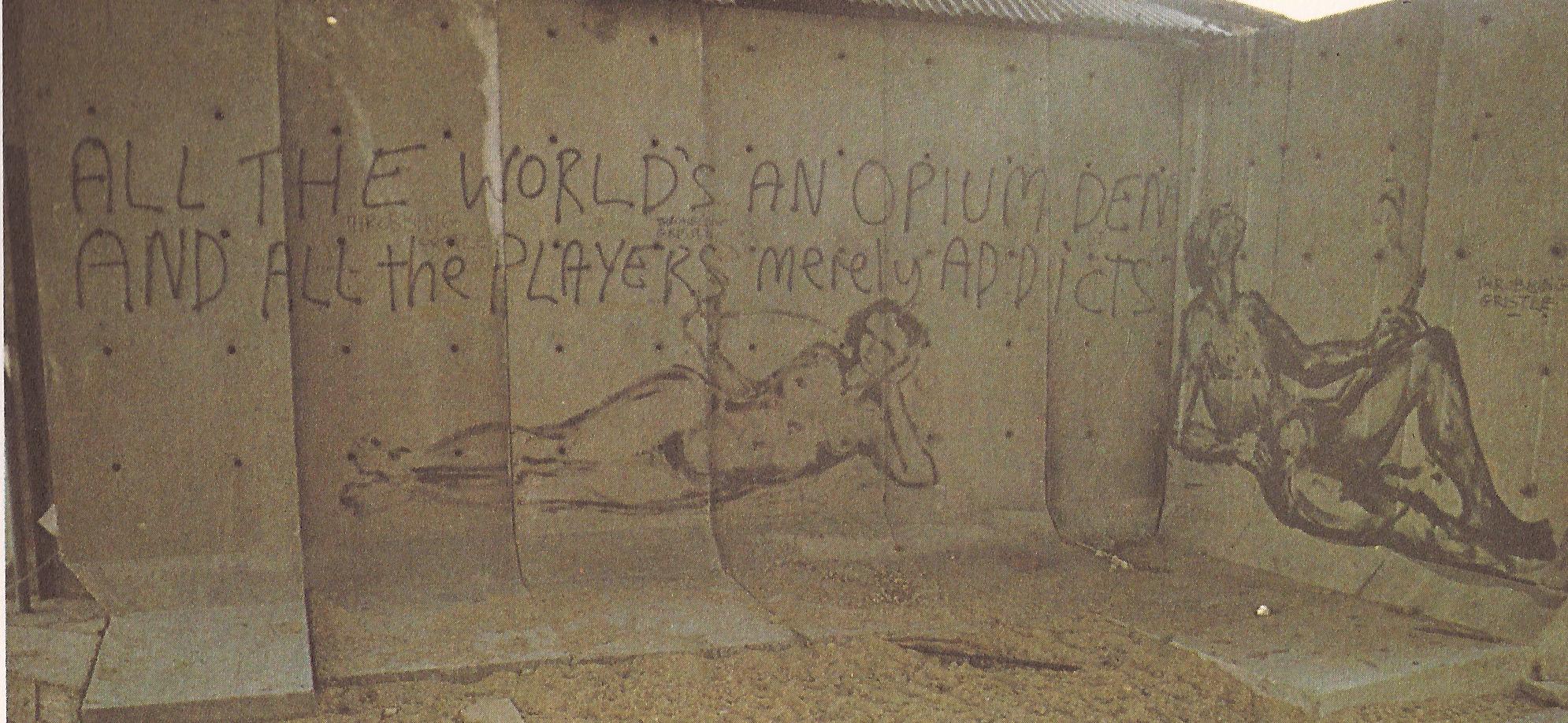

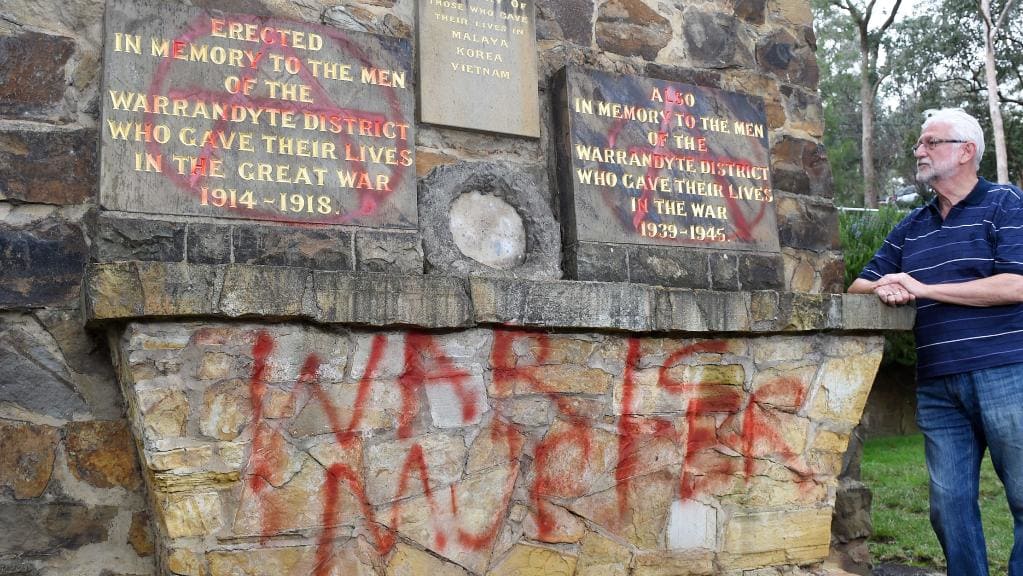

French graffiti: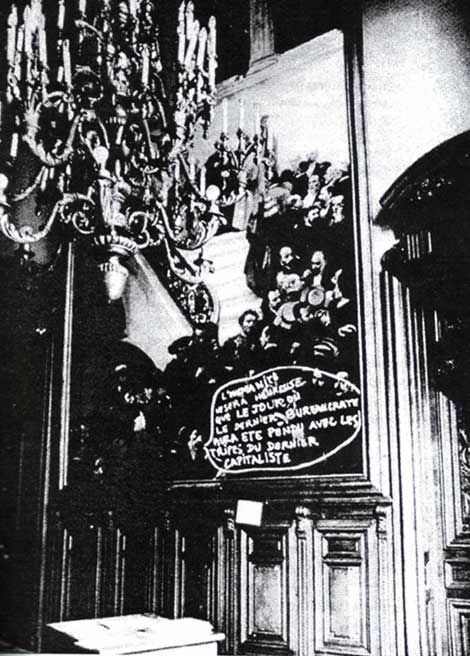
(graffiti in the Sorbonne, May 1968)
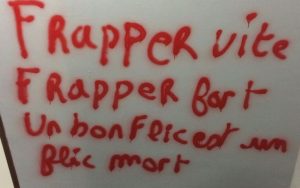
Hit quick, hit hard, a good cop is a dead cop
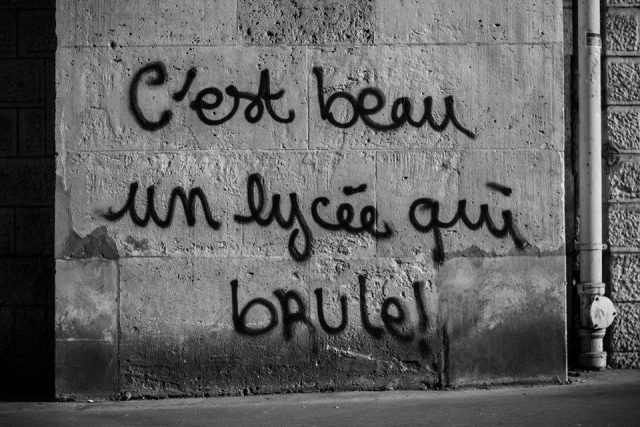
22/9/16: “It’s beautiful – a high school which is burning”
15/9/16:
Bretagne: windows of Front National offices smashed after having been tagged earlier in the week

And windows will know the perfume of the stone and of morning’s air
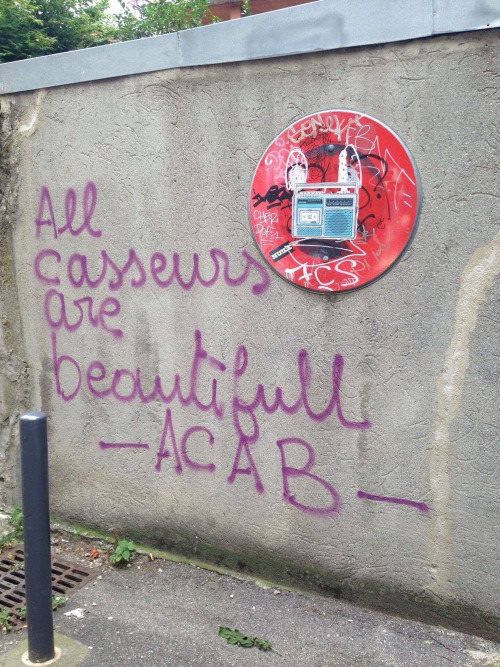
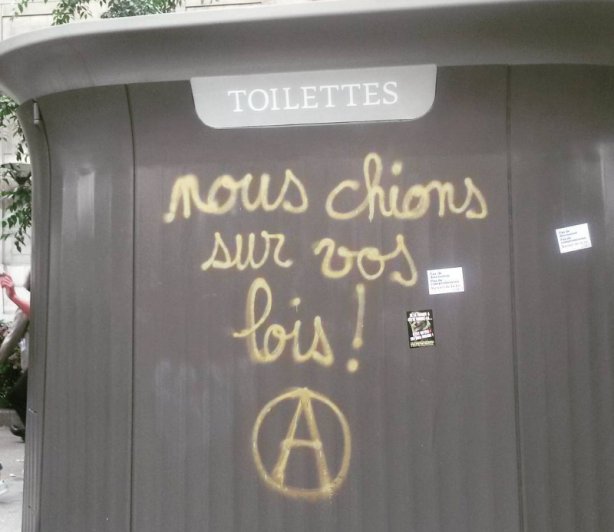 The Effluent Society: “we shit on your laws!”
The Effluent Society: “we shit on your laws!”
***
Some Spanish graffiti:
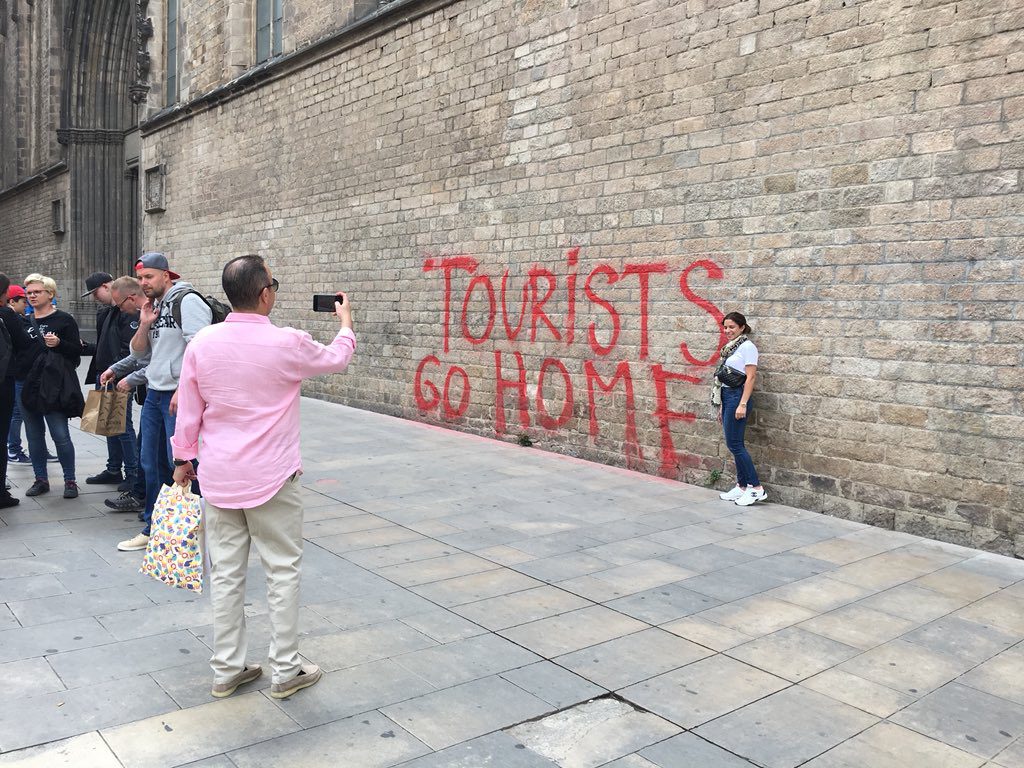 Tourist in Barcelona takes photo of tourist, far from home, far from themselves:
Tourist in Barcelona takes photo of tourist, far from home, far from themselves:
“While eliminating geographical distance, this society produces a new internal distance in the form of spectacular separation.”
Tourism — human circulation packaged for consumption, a by-product of the circulation of commodities — is the opportunity to go and see not only what has been banalized, but also to go where the tourists don’t go (yet), do what the ordinary tourists don’t do . The tourist who does things that make them feel like they’re an alternative tourist, that make their tourism feel like they’re not really a tourist: a cynical tourist who sympathises with those who think tourism is taking a holiday in other people’s misery. Here distanciation – taking a step back to see what’s going on – is no longer a critical choice, a decisive tactic – taking a step back in order to do something about the situation – but a cynical submission to a world outside of one’s choices, a distanciation that only produces a masochistic distance from oneself: people observe a critique of themselves and instead of acting on it merely add it to their collection of “interesting” events and inconsequential reflections, to make them the cynical “star” of the cynical moment, the cynical receiver of a thousand “likes” when they send their photo the next second to all their virtual friends, their equally cynical Facebook/Instagram friends.
***
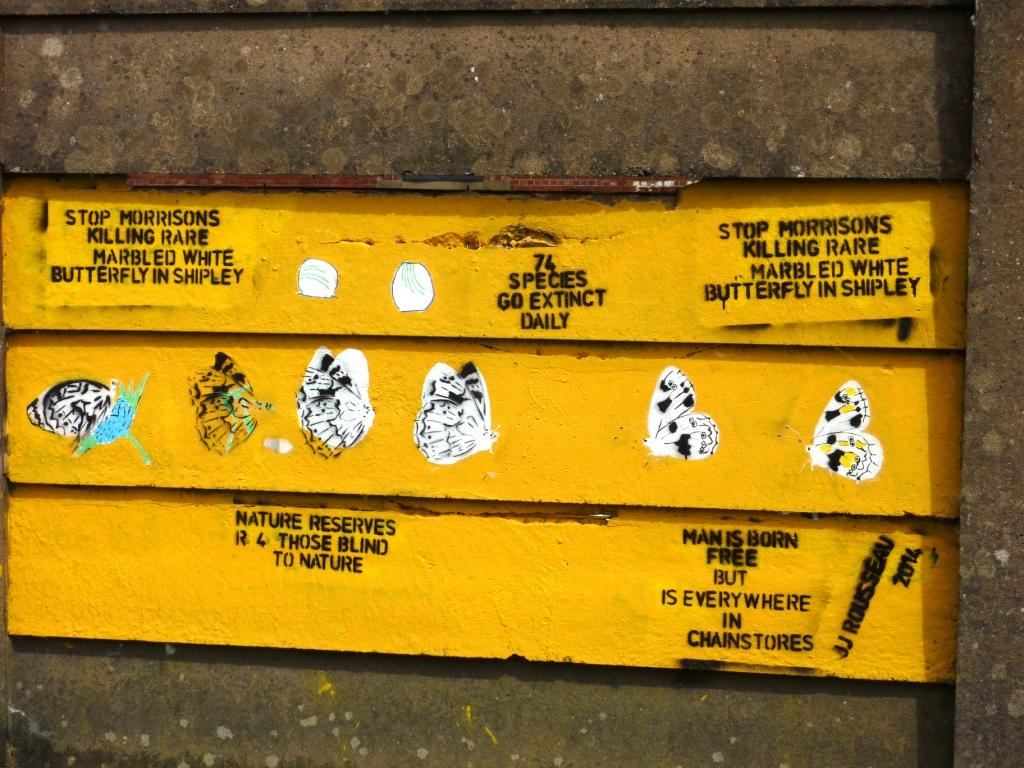 Above and the 5 tags below: on a brown site, scheduled for a Morrisons supermarket development, in Shipley, UK
Above and the 5 tags below: on a brown site, scheduled for a Morrisons supermarket development, in Shipley, UK
Below, 3 from Hong Kong, June 2019:

HK, June 2019:

Hong Kong November 2019:
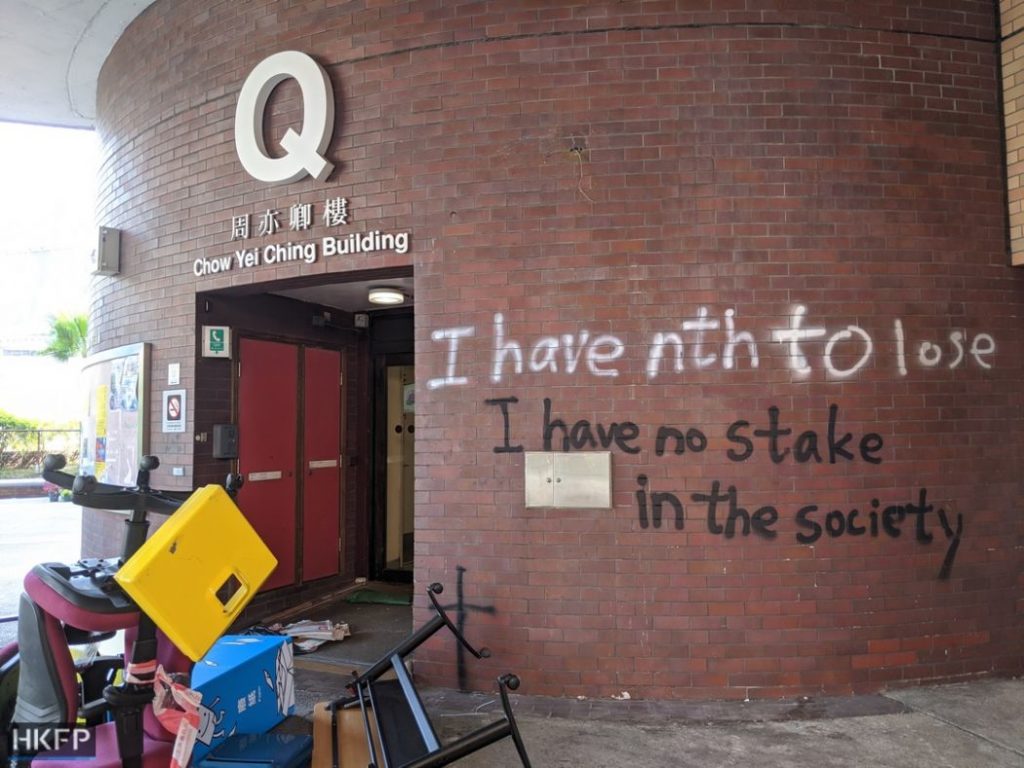
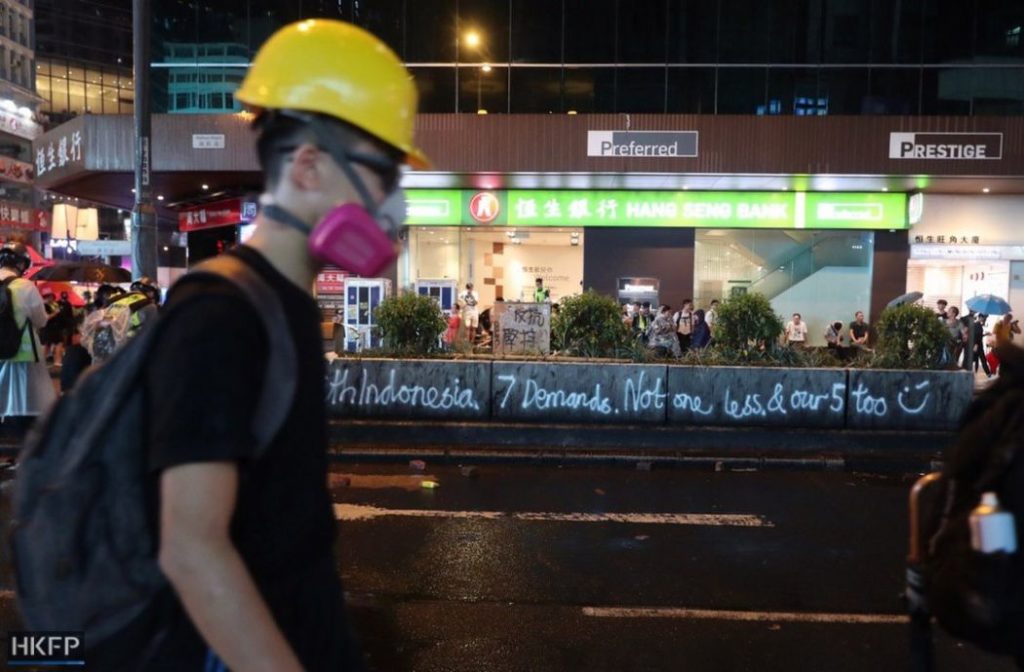
Mong Kok – solidarity with Indonesia, 6/10/19
Other graffiti:
The Writing’s on the Wall: Graffiti from the Ferguson Rebellion
http://www.bopsecrets.org/recent/france2006.graffiti.htm
https://libcom.org/history/boredom-weeps-graffiti-curses-inscriptions-may-1968
http://www.bopsecrets.org/CF/graffiti.htm
Part 2:
Graffiti as representation
Up until the 1970s graffiti had no pretension to being art. Its content was largely good or bad ideas or nonsense or sexual or just swearing or combinations of all these, but it had little to no concern with aesthetics. In the 70s that started to change. Round about the mid-1970s, when I was doing most of the graffiti of mine depicted above, I lived in a small rented flat in Swiss Cottage. Downstairs, there was Roger Perry who took photos of graffiti for Time Out: his book “The writing on the wall”, which contains lots of King Mob graffiti, came out about that time (he took the series of photos along the overhead section of the Metropolitan line: “SAME THING DAY AFTER DAY –TUBE – WORK – DINNER – WORK – TUBE – ARMCHAIR – TV – SLEEP – TUBE – HOW MUCH MORE CAN YOU TAKE: ONE IN TEN GO MAD – ONE IN FIVE CRACKS UP”, reproduced above). He lived with his girlfriend, who was also a photographer, but took cold black and white photos only of park benches without any people either sitting on them or even around them, conveying an unpleasantly desolate emptiness. I mention this because for both, it was just art, even though Roger Perry’s art was more interesting insofar as it had some content, though the photos of radical graffiti were mixed with bizarre ones like “BEWARE THE THUNDEROUS TROWEL SURGEONS” or stupid conservative ones like “Clapton is God” . Upstairs there was another graffiti-ist, an art student early 20s , but his graffiti was purely aesthetic – full of colours and shapes and meaningless lettering, all form and no content. Although at that time in the UK it was pretty original, a form of art that involved, unlike Roger Perry’s, the risk of arrest, it’s the kind of graffiti we’ve now got used to, a form of art that escapes immediate commodification but nevertheless communicates just the desire to make the streets we have no control over prettier.
A friend recently described an action by about 50 or so graffiti-ists that involved going along to a station and in plain view very quickly covering a train head-to-wheel in aesthetic graffiti. After a few minutes they ran off, none of them being stopped by security because there were too many of them. Apparently this was something they did regularly. My friend was very admirative of them, but I couldn’t see the point. Sure, it required a good deal of daring organisation and co-ordination, but it didn’t communicate any ideas and for me that’s vital. It’s a momentary bit of fun, but what’s lacking above all nowadays are some ideas that make people think something more than “Wow! – they got away with that!”. The repression of expression, of original critique, which had flowered so gloriously in May ’68 and after, with the massive pushing back of people into just getting through the day, with all its survival hassles, has also meant that there’s little blossoming of the imagination, of the ability to detourn the environment and its walls. In line with dominant social relations mediated by images where individuals are increasingly incapable of recognising each other in their desires and disgust for this society, images of revolt replace communication of revolt. Like the way people write their “tag” name everywhere just so they can see it later, an individual game that just they & their friends recognise as being their signature, like saying to themselves and their friends “I’ve been here”, something they just obsessively do to make their mark on the world but only as a repetitive habit that makes passing through the city seem less banal and a bit more rebellious than just passing through. Sure, we can say that it’s better to do this than just passively accept the image of order conveyed by horrible architecture, adverts, shop signs, and so on – the image of order that hides the fundamentally disorderly contradictions of alienated life. But it’s a routine that doesn’t convey a desire to critique or detourn a specific materialised expression of this life in the form of specific institutions, adverts, etc. etc.
Even worse as an expression of modern conditions of repression has been merely tagging an area to delimit your gang’s territory of control, marking out the boundaries of your specific drug dealing business as a threatening warning to potential competitors.
In the 1970s The Rolling Stones paid people to go round London spray-painting “It’s Only Rock ‘n’ Roll” on walls all over the place – an ad for their album. Cheaper than paying for official ads and “oh-so-subversive”.
And then there are businesses, angry about having to fork out money to clean up graffiti (when often it wouldn’t even effect their business) provide an acceptable space for acceptable graffiti.
However, none of these limited forms of graffiti, whose sometimes slight nuance of revolt communicates nothing more general, are anything as distasteful as that contradictory commodity called Banksy, all the worse for combining aesthetic form with a pretense at critical content. All the worse because he’s far more a reflection of phoney hypocritical critique than the previously mentioned graffiti-ists. At least the drug dealers don’t pretend to be into it other than for the money. And the others have no desire for lucrative fame in the art commodity world.
Despite some irritating curiosities, this is the best critique of Banksy that I’ve seen (scroll down to almost half-way):
“With Banksy we have: An art that is anti art seemingly beyond the realisation and negation of art / An anti-capitalist ultra-capitalism / The non-corporate corporate as his often telling street graphics morph into corporate praxis / a corporate subversion / Anarchy with a PR rep straight from Hollywood / An ultra-commodified anonymity / The clandestine guerrilla of subversive millionairing / Disappearance and invisibility as great career moves / Anonymous guerrilla action becoming a personality cult, an innovative publicity gimmick, etc, etc.,….. Enormous contradictions which are seemingly endless. Now without the promise sparked by an overpowering and recent profound subversive moment in the immediate past (as May ’68 was in France along with the rest of the remarkable subversive moments elsewhere throughout the world around the same time) it is now necessary to invent the apparition of one along with the ghostly secondary reappearance of its own fictive aftermath. With 1968 the moment of true, radically clear-headed and profound anti-art was remarkably short lived petering out by the turn of the 1970s. In no time a cynical compromise was obscenely set-up which helped keep the old world intact as seemingly daring innovation quite quickly acquired low key back-up from washed-up curators – almost fatally wounded by 1968 – and their well-off sponsors. Everything then changed in order to remain the same….
What to make of the rise and rise of tags and pieces in general?
Since 2011 tags and pieces painted on walls, doors utility installations, etc. have massively increased everywhere in a collapsing UK plc after something of a lacunae during that year of open protest. What does this mean within the context of a country travelling socially backward at a rate of knots? On the level of surface appearances tags and pieces are simple, cartoonish, lightweight decoration with hardly a glance in the direction of subversive, enlightened comment which marked the late 1960s and early 1970s… Isn’t today’s clandestine tags and pieces phenomenon – much influenced by American shop window wildstyle graphics – riven with internal conflict often moving in many directions at once? Isn’t it both artistically aspirational melded together with a strong basic undertow in the UK of proud, uncompromising social apartheid where all that matters is guts and two fingers up to authority with prison around the corner rather than entertainment for a despised art gallery coterie full of middle class wankers? Isn’t ‘the high’, the aggressive act in itself armed with tins of spray paint (often ripped off) all that matters; a form of sabotage the bigger the better simply to more or less nihilistically fuck things up even more?
There truly does seem to be a distinction between this attitude and those aspirants flitting from wall to wall on the make ever ready to be selected for an art exhibition or, if not that, to be officially hired by the local council for some lousy frolic of a hoarding or a big shot company with an eye permanently on the money markets. And Brandalism uneasily all over the place fitting-in somewhere in-between as J.C. Decaux hoardings are cracked and new poster hoardings are inserted as Harrods becomes Horrids, etc. care of Penny Rimbaud and Steve Ignorant, et al…..which in its turn then re-influences mainstream advertising?
It seems that among the rank ‘n’ file base of the subterranean tag and piece community, the path of a Banksy (all the way to the bank) is despised not because the punters wouldn’t like to get their hand on a mass of spondoolies but the way how it’s done and the treachery against comrades in (spray can) arms which is involved; in short what boils down to a kind of un-worked out anti art aggression. Yep, a tag is to get known alright but in the sense of blackening (or reddening) the eye of authority, to really get under their skins, to provoke the law with the aim of becoming a martyr for the cause of graffiti rebellion – the act itself meaning so much more than any cornball visual statement. And isn’t Banksy pure sell-out; a guy who can make something of an intelligent, amusing comment but only finally for the amusement of the super-rich of Euro / America especially the Hollywood Hills? Moreover, ever ready to viciously rubbish his tags and pieces comrades like his well known rubbishing of Fisto.”
Who is Fisto? It’s the tag name of Simon Sunderland, who was jailed in the 1990s for 5 years for doing massive amounts of radical political graffiti round the Sheffield area when he was in his early 20s (the sentence was later reduced to 21 months – still an incredibly long time for something that 15 years before would have just got you a fine. See this and this .
The above links imply that all he wrote were his tag name “Fisto”/”Fista”/”Bloodaxe” but in fact his main graffiti were attacks on Sheffield council, its politics and other aspects of society – e.g. “In a society based on image, greed and selfishness we are the few who have broken the chains by exposing our art by any means necessary” (here). He also wrote “This is a blind society. Every day, everywhere we go we are bombarded with these big adverts making money selling lies. And people believe them. They’re brain washed even if they say they are not. But when someone is individual or real, they think it’s some big crime. I don’t feel part of this system or society.”
As for Banksy, it’s heartening that some people don’t feel as adoring of him as those submissive to the world of commodified art would like people to be:
11/10/13:
US, New York: Wanksy “graffiti” graffitied again – “We don’t need more rats”
4/10/13:
USA, New York: Wanksy gets out-graffitied …taking the piss out of the piss artist…also, see some of the comments after this article – in particular, this: “3 weeks ago a 29 year old got over 3 months in prison for graffiti. (see this: http://www.thestar.com.my/News/Regional/2013/09/08/Jailed-for-graffiti-mischief-29yearold-man-sentenced-to-more-than-three-years-in-jail.aspx? ) but this is nothing compared with what happened about a month ago – in Florida, I think – when a teenage graffiti tagger got tasered to death by the cops. This stupid sick society knows how to co-opt aesthetic graffiti and take out what was a little subversive in it by turning it all into Art, with Banksy laughing his way to the bank. One law for the rich, another for the poor – surpise surprise. One law for the artist another for those who don’t want to pretend to be “creative” in socially acceptable ways.”
*Footnote:
An exchange of mutual arselicking between Thatcher and Hua on the occasion of Hua’s visit to London:
Thatcher: “I have great pleasure in greeting you on your arrival in Britain. This is a unique occasion, the first ever visit to Britain by a Premier of the Peoples Republic of China. Welcome. China is a great and historic nation which has a crucial role to play in world affairs and we attach great importance to our bilateral relations with your country and have been very pleased by their rapid development and expansion over recent months. We now enjoy close understanding and cooperation in many fields and I am sure that your own visit will make a major contribution to the further improvement of this relationship. I personally look forward very much to my discussions with you and I also hope that you will enjoy the opportunities you will have to meet a wide cross-section of the British people, to look at some examples of British industry and technology, and to see something of our British way of life and culture. On behalf of the British Government I welcome you warmly and wish you a happy and successful visit.”
Chairman Hua Guofeng: “Prime Minister Thatcher, I am privileged to come to the United Kingdom on an official visit at your invitation. Thank [end p1] you for according us this warm and cordial welcome. I extend good wishes and greetings to the British Government and people on behalf of the Chinese Government and people. Sino-British relations have developed smoothly with cooperation and exchanges broadening in every field. This visit of mine marks the first such exchanges between the Heads of our two Governments and it represents a new stage of closer ties between China and Britain. The Chinese Government has maintained all along that Western Europe has an important role to play in defending world peace and it has given high priority to the development of good relations with the Western European countries. In the turbulent and volatile international situation which now prevails, the fundamental interests of the people of all countries are closely linked and I have come to visit Western Europe at this particular juncture. I have had deep-going (sic) discussions and reached a wide measure of agreement with the Government Leaders of France and the Federal Republic of Germany. There is much common ground between China and Britain on a large number of major international issues. I am confident that my talks with Prime Minister Thatcher will yield positive results and that my visit will help to promote friendly cooperation between China and Britain and contribute to the cause of world peace. Thank you.”



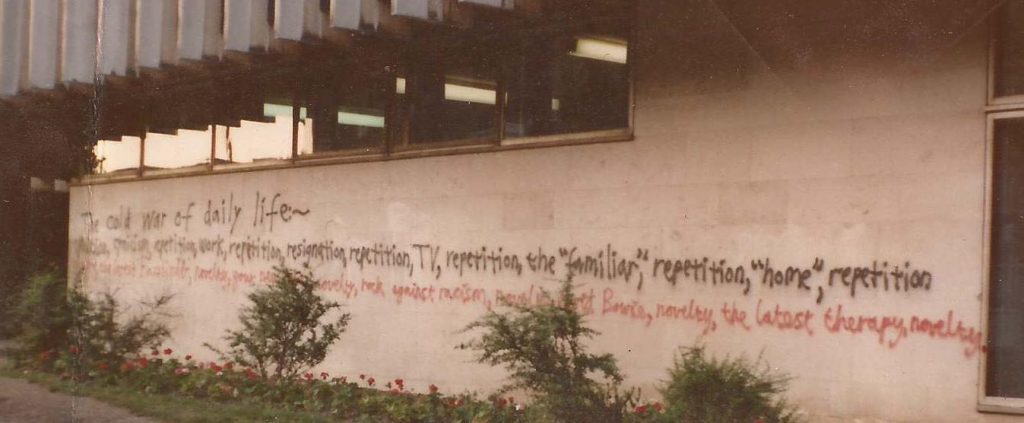
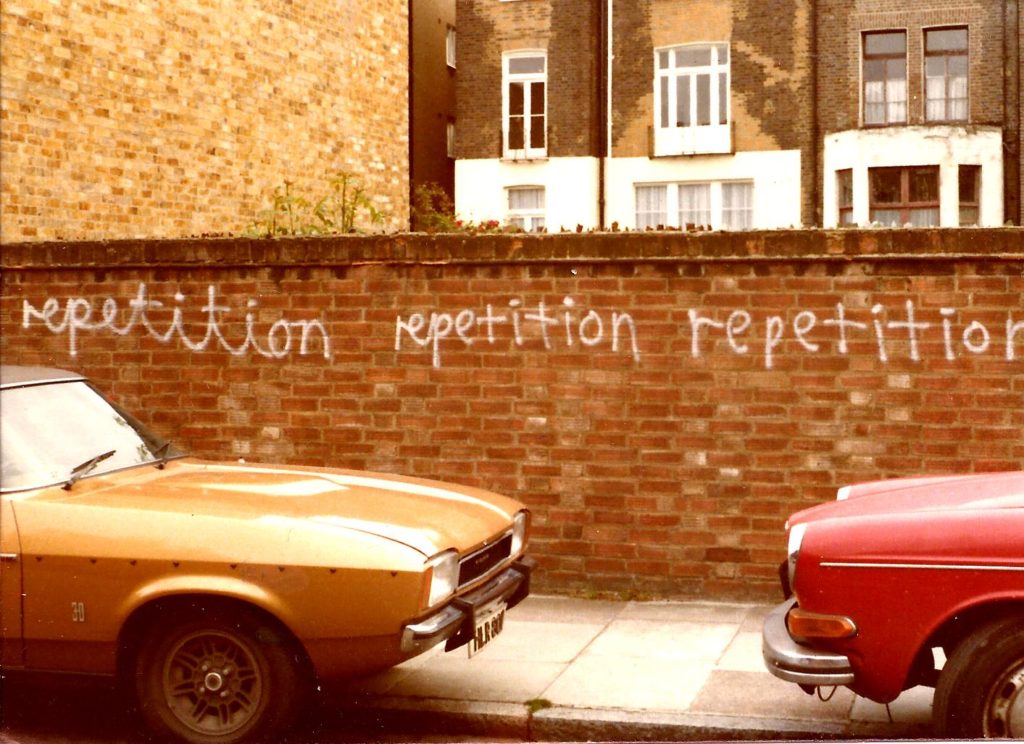

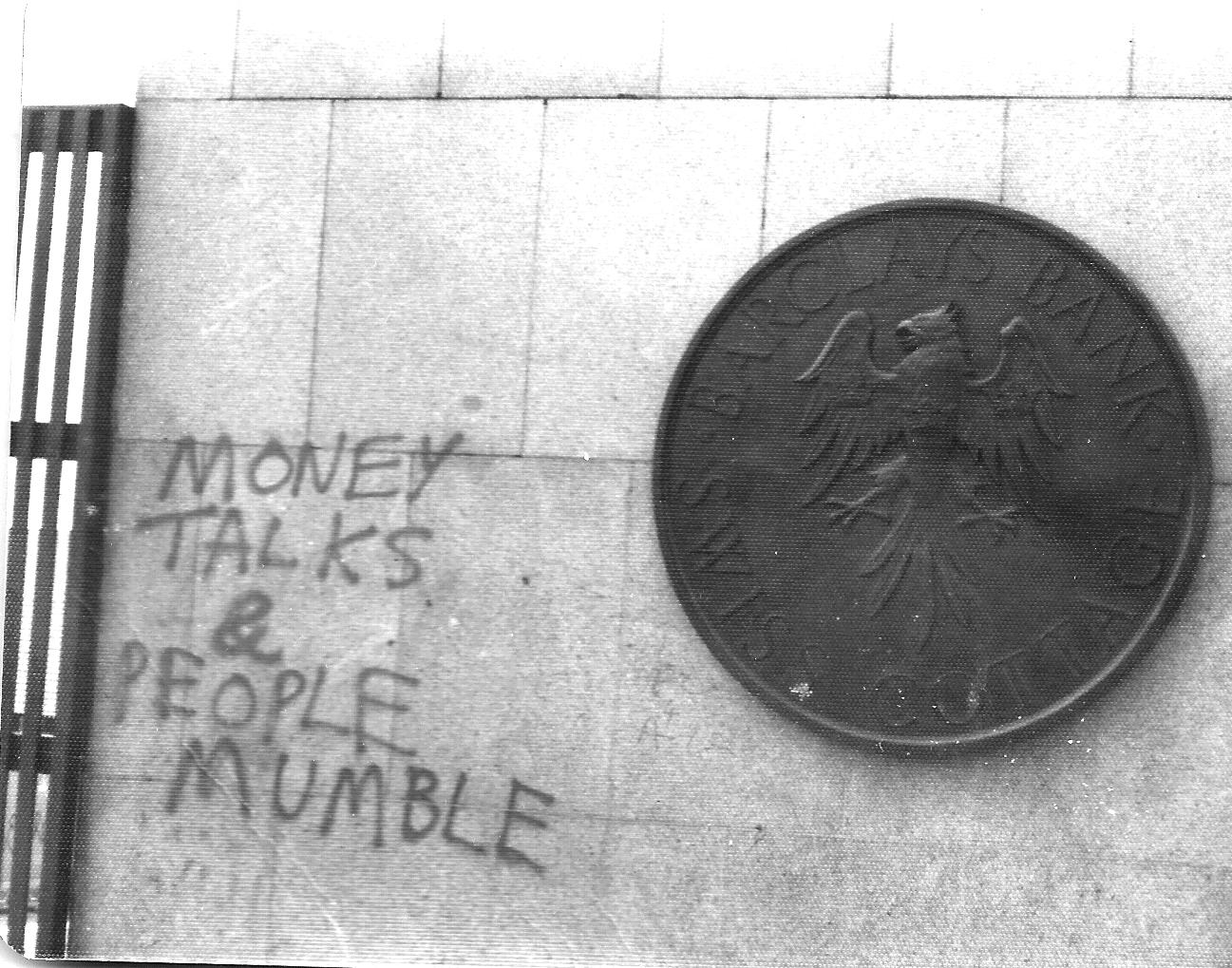


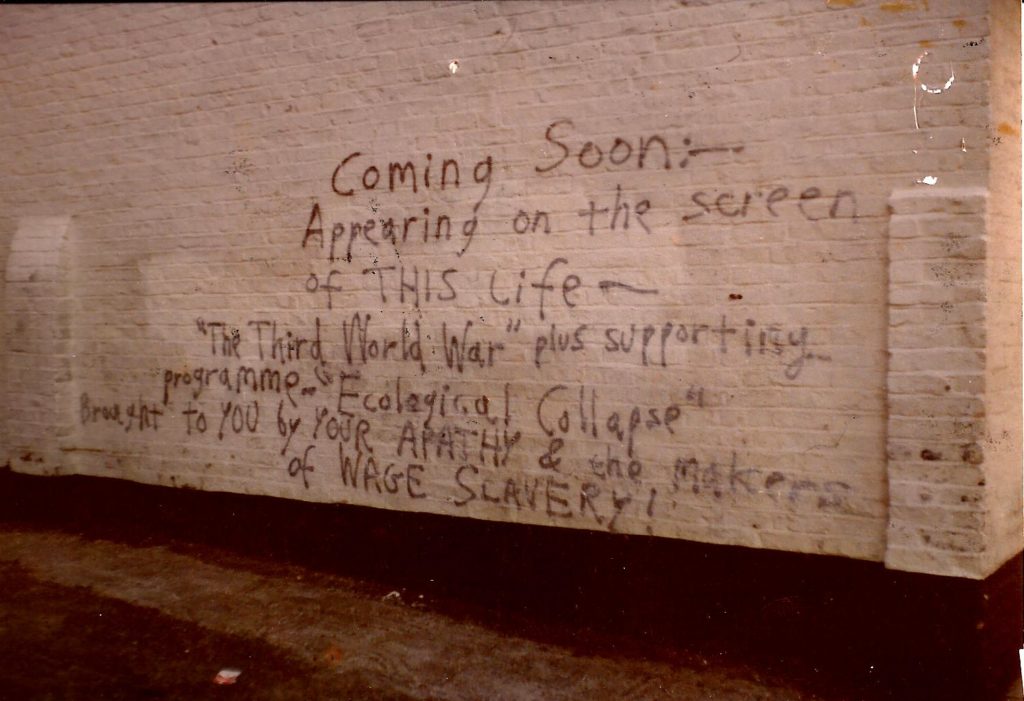
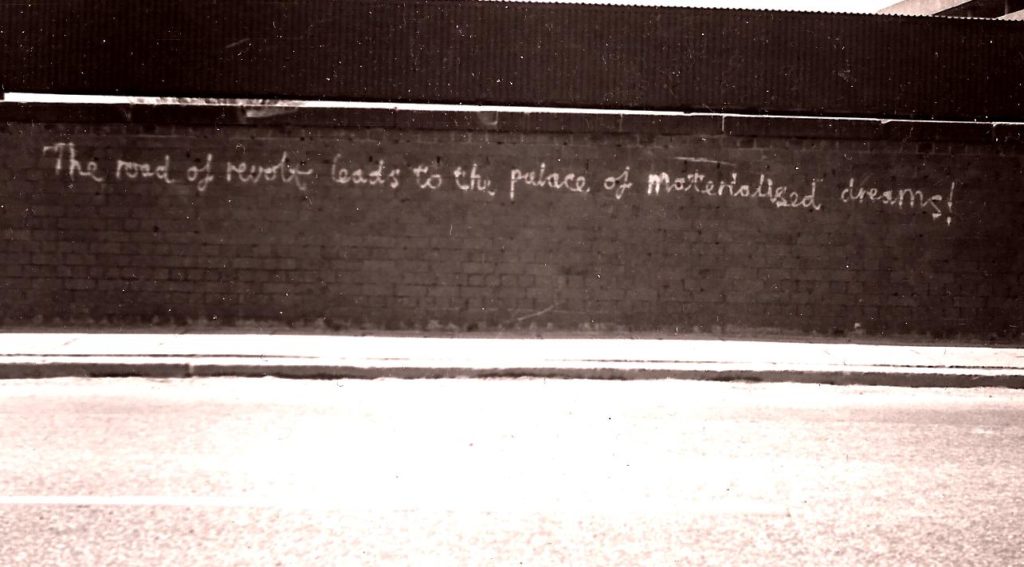
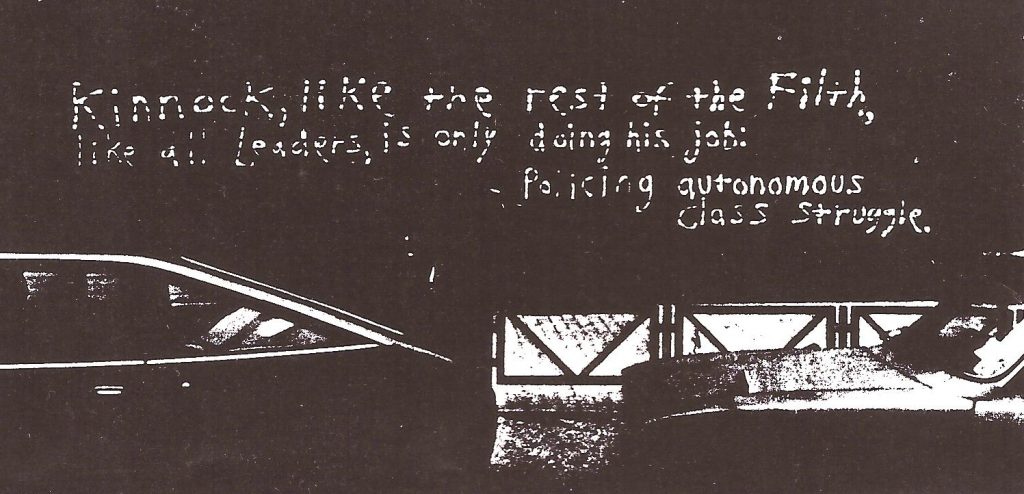
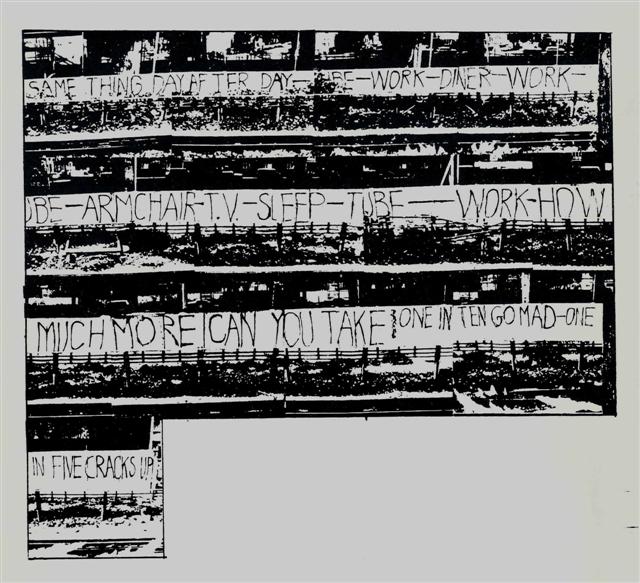


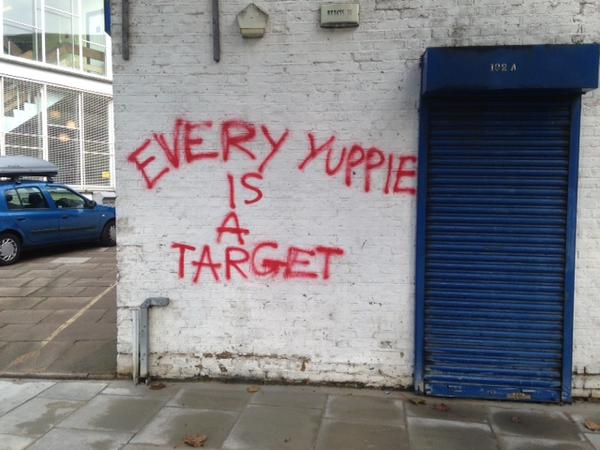
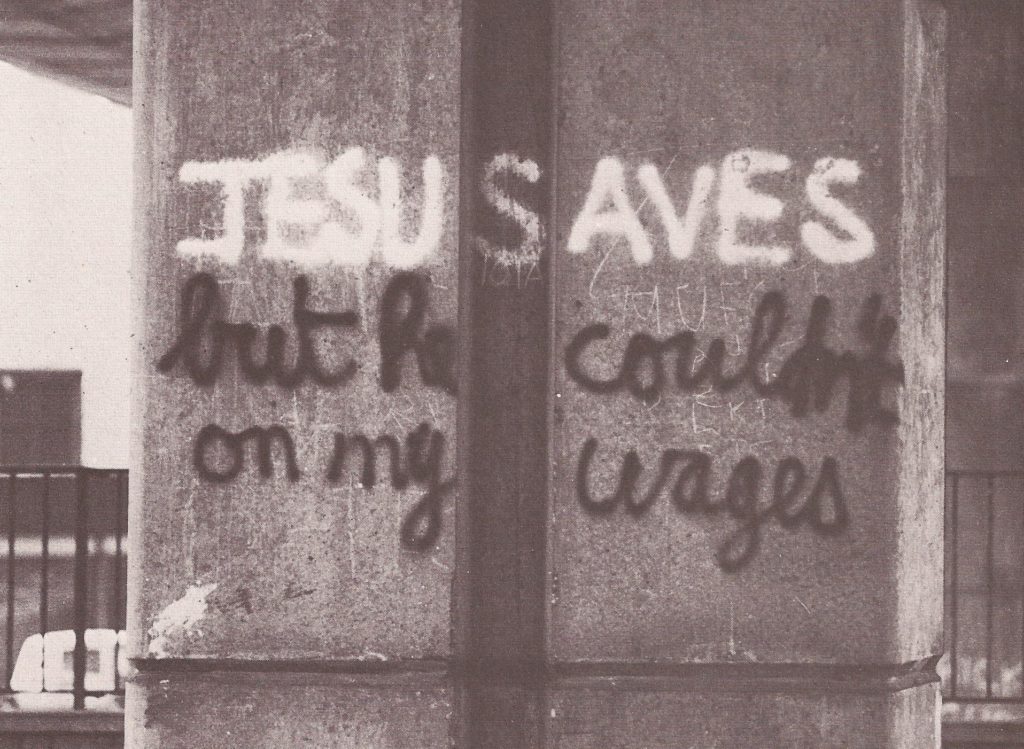


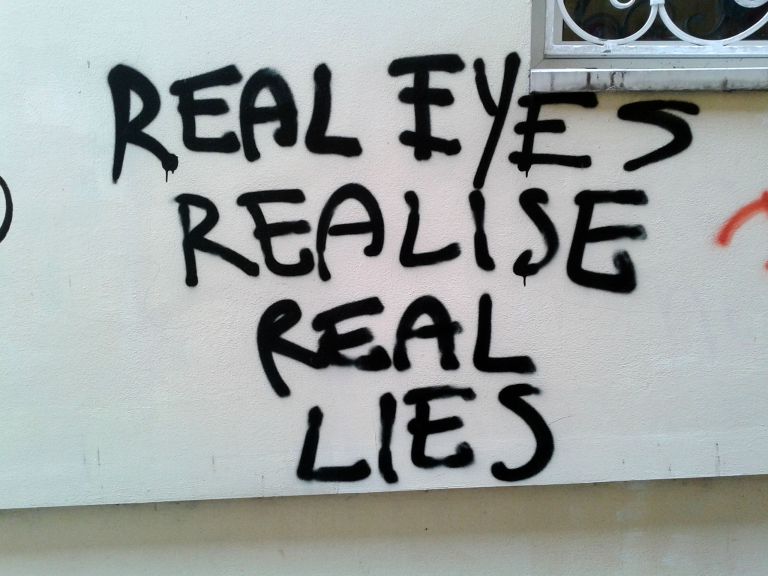
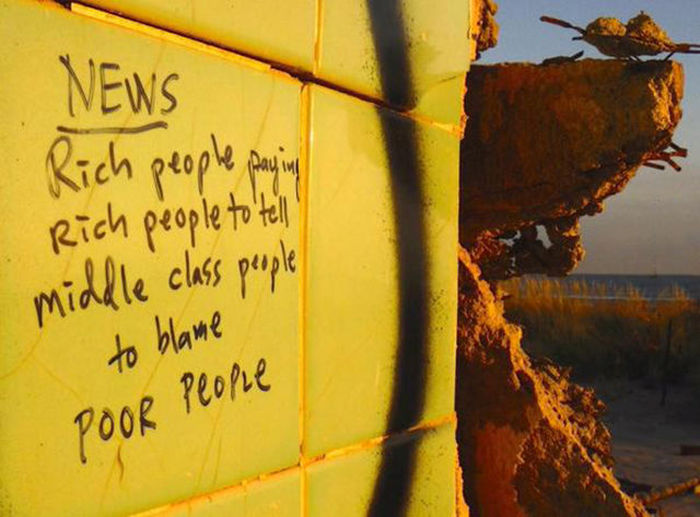
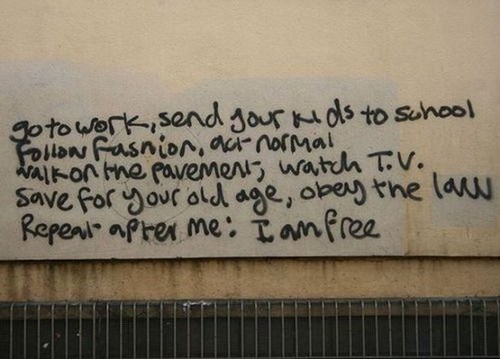
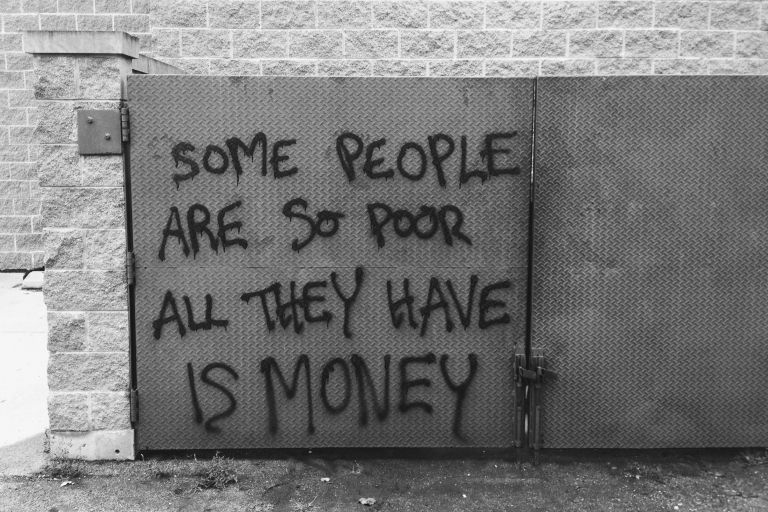
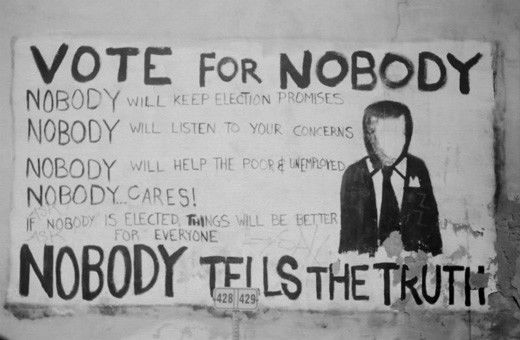

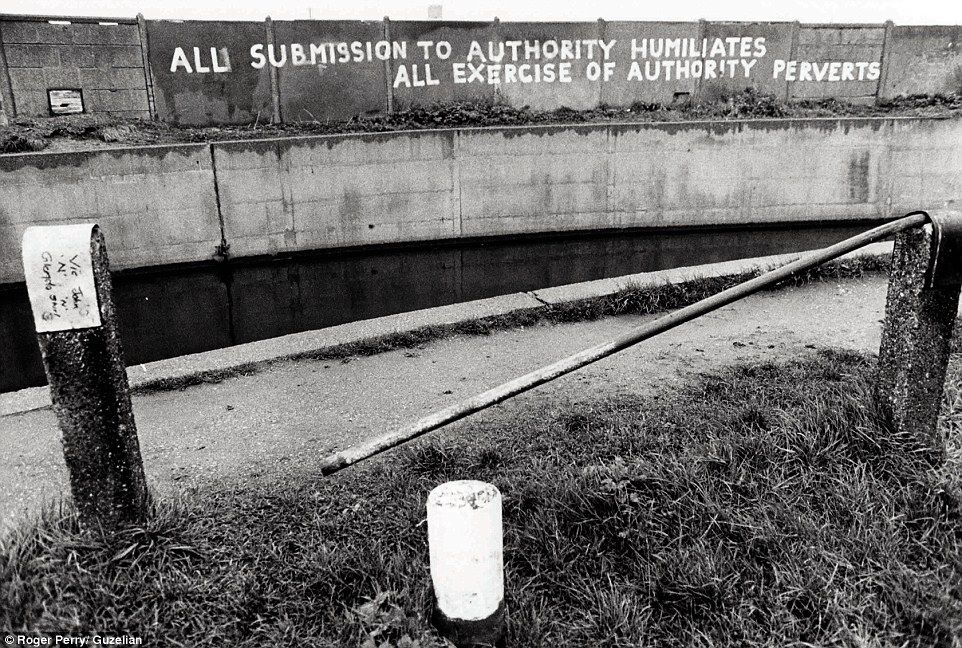
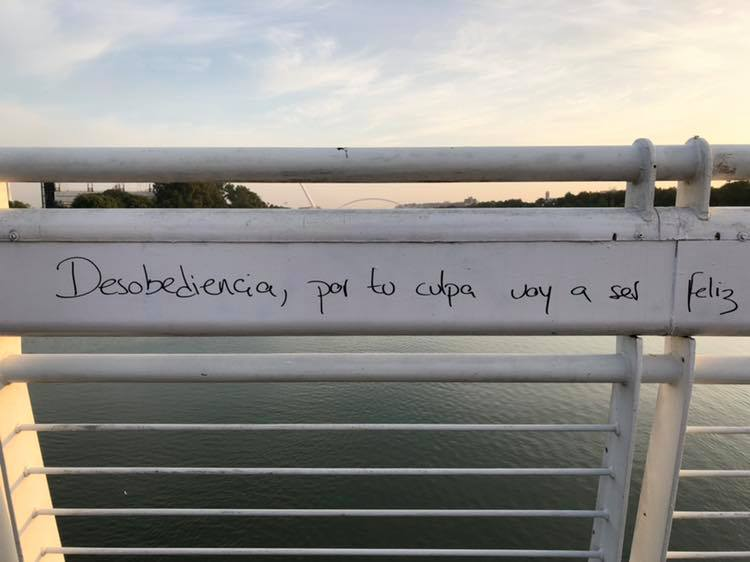
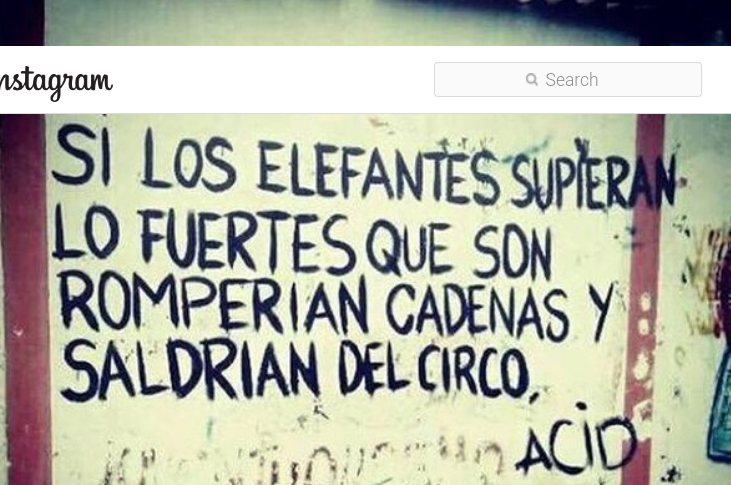

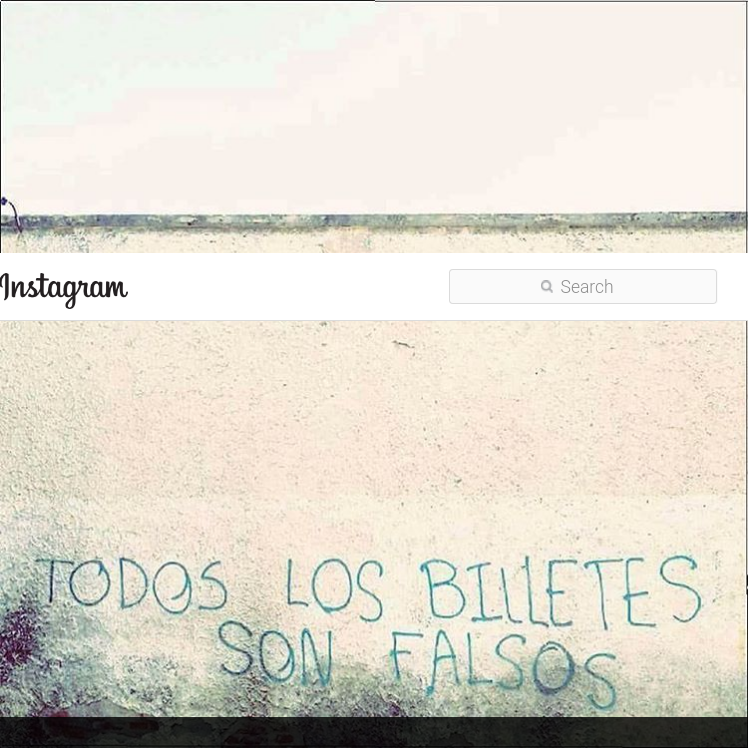
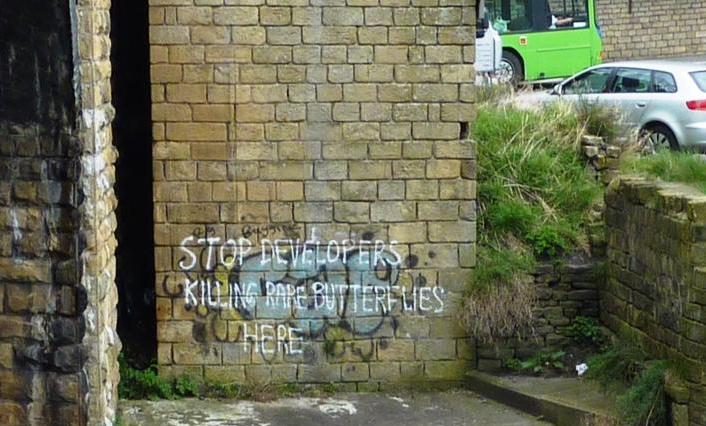
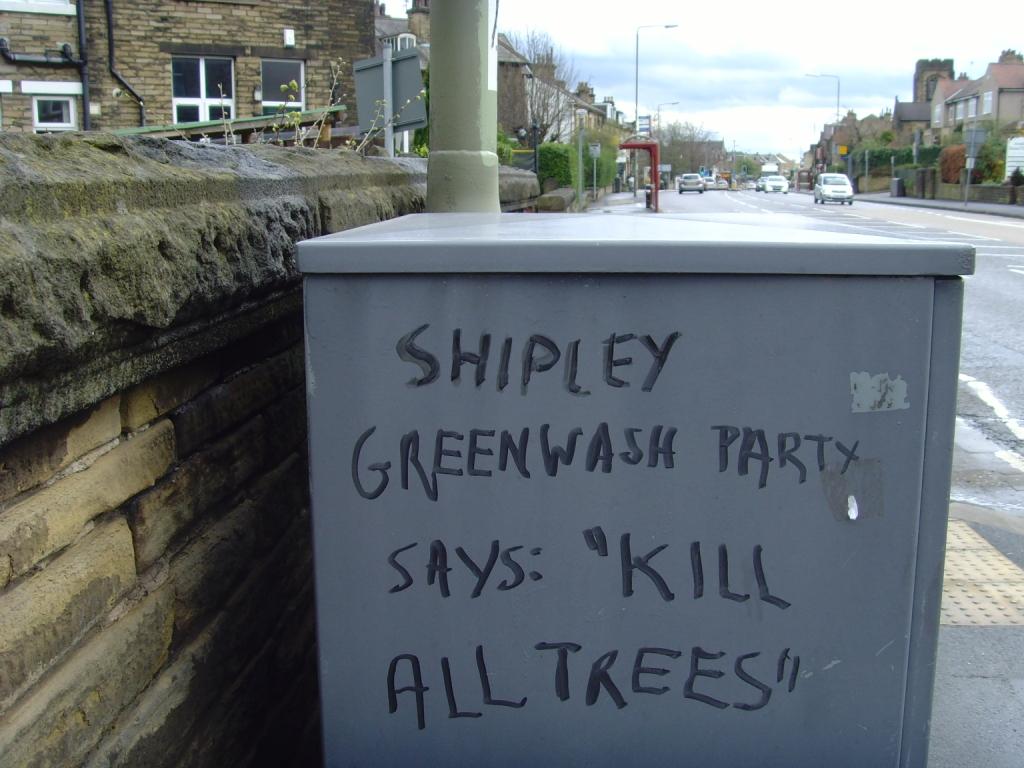
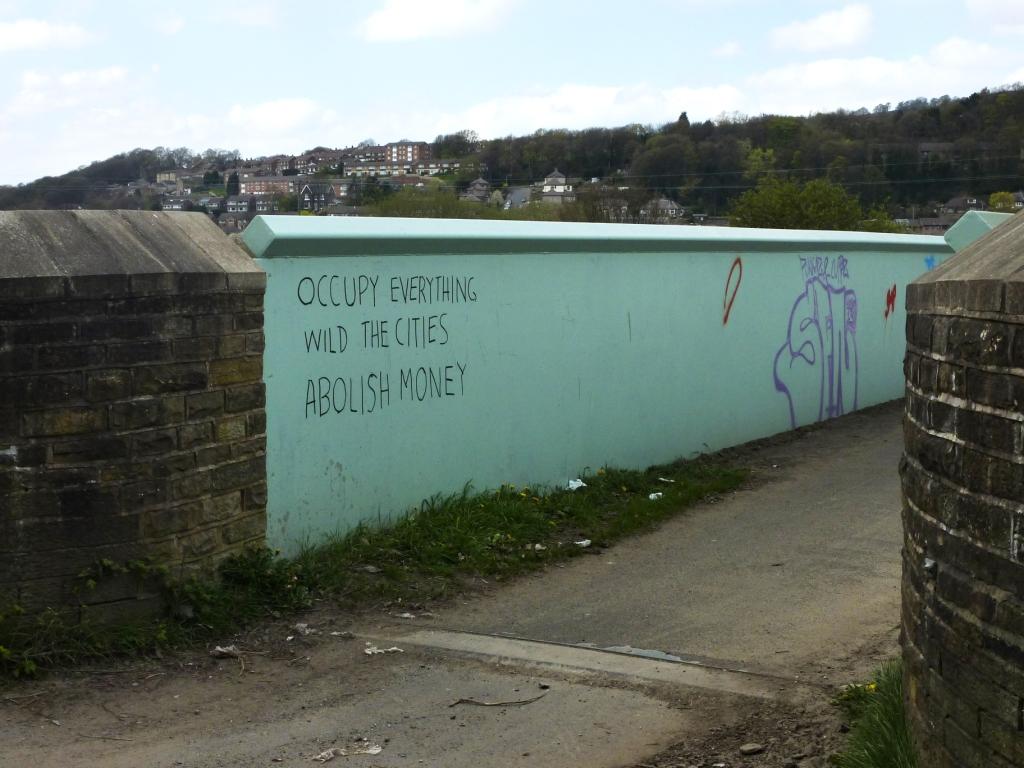
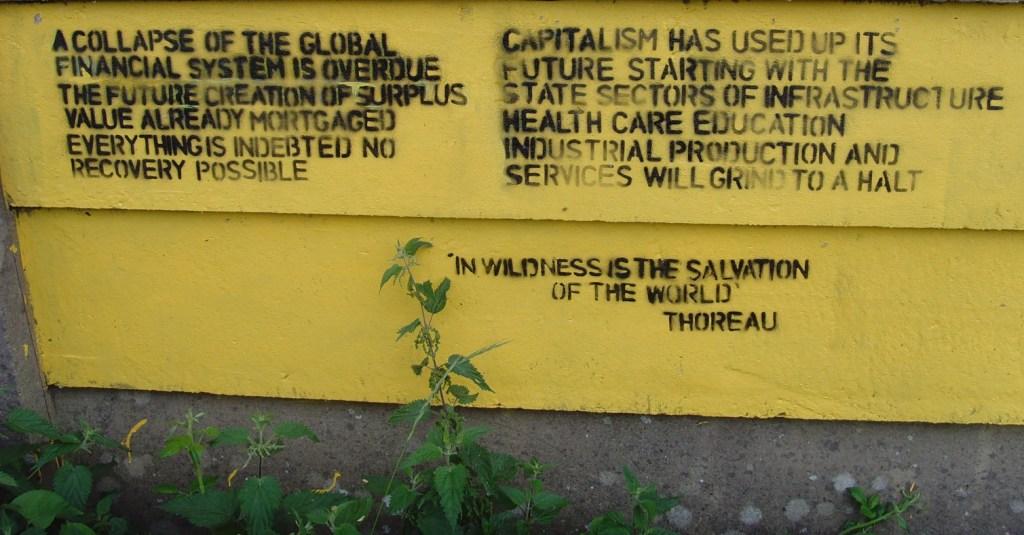
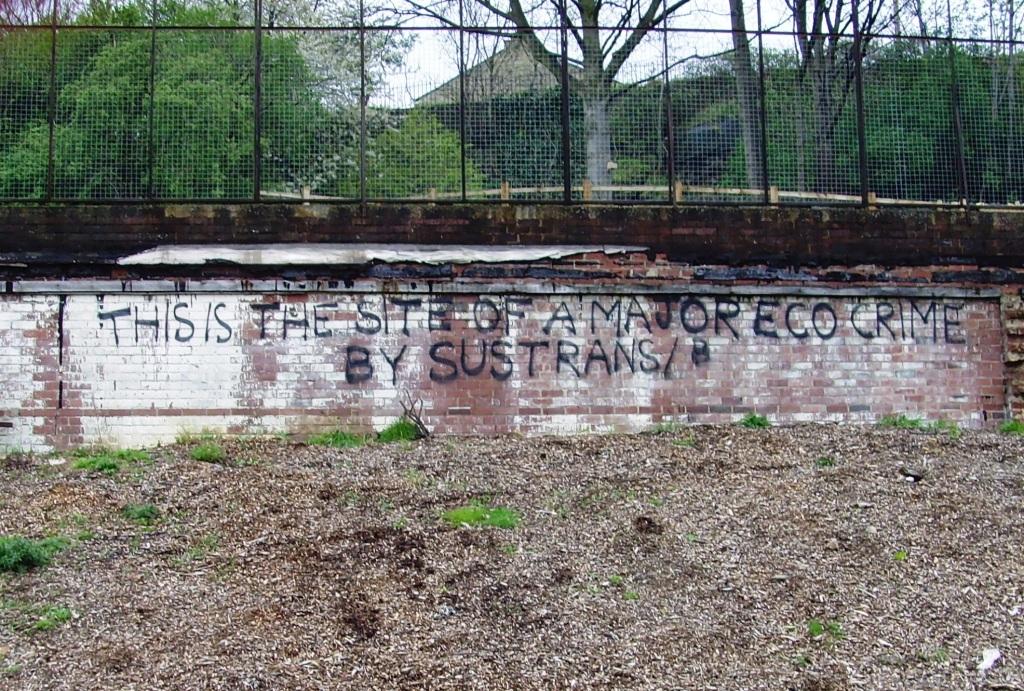
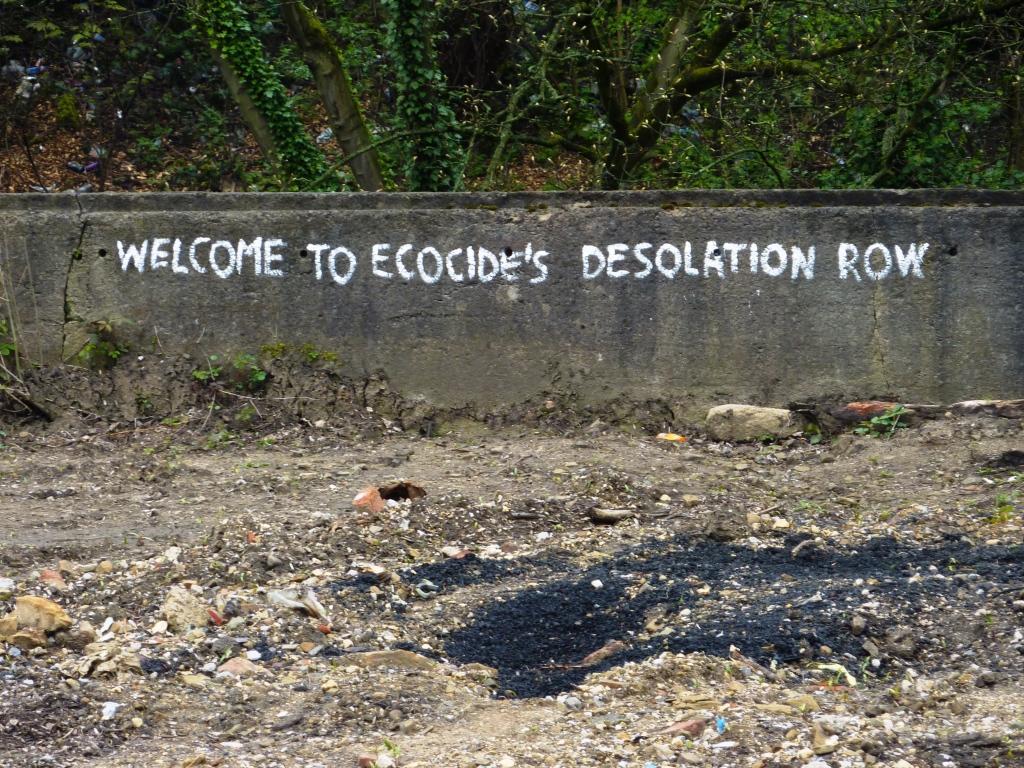

Leave a Reply